Marketing automation and lead nurturing: creating sales-ready leads
January 13, 2016
These slides are from a recent I talk I gave to The American Marketing Association, Portland Chapter.
(Here’s a PDF if you’d like to download the slides).
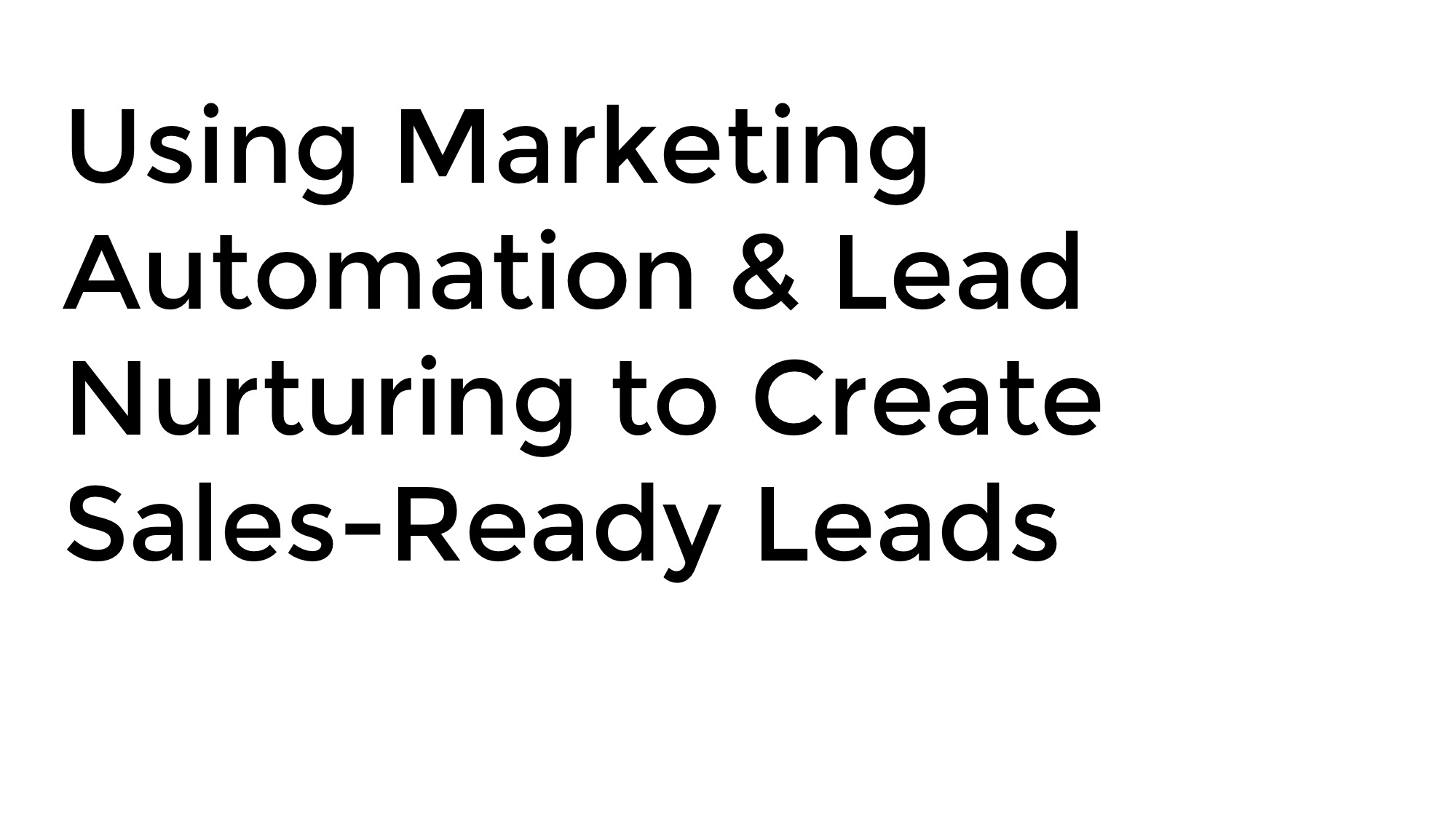 |
Hey, thanks everyone for coming. So, I was asked to speak today about using Marketing Automation and Lead Nurturing to Create Sales-Ready Leads. |
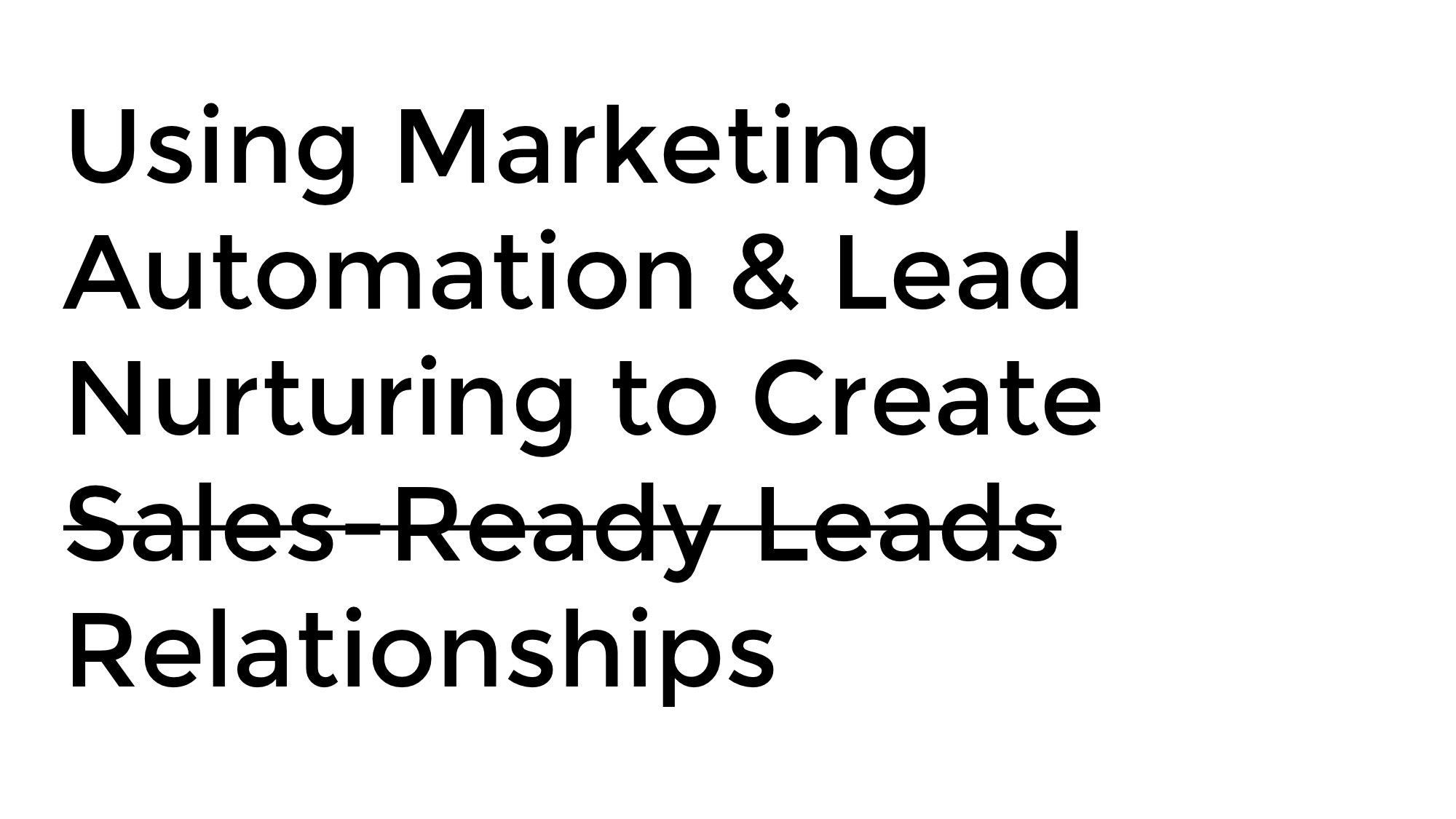 |
And I will talk about that. But what this talk is really about is creating relationships with your prospects, and your customers. And using technology to automate a lot of the work involved, and do it in a really scalable, efficient, and high-quality way. |
 |
Let me start by telling you a story about Ashley. Ashley is a rep at Urban Airship. |
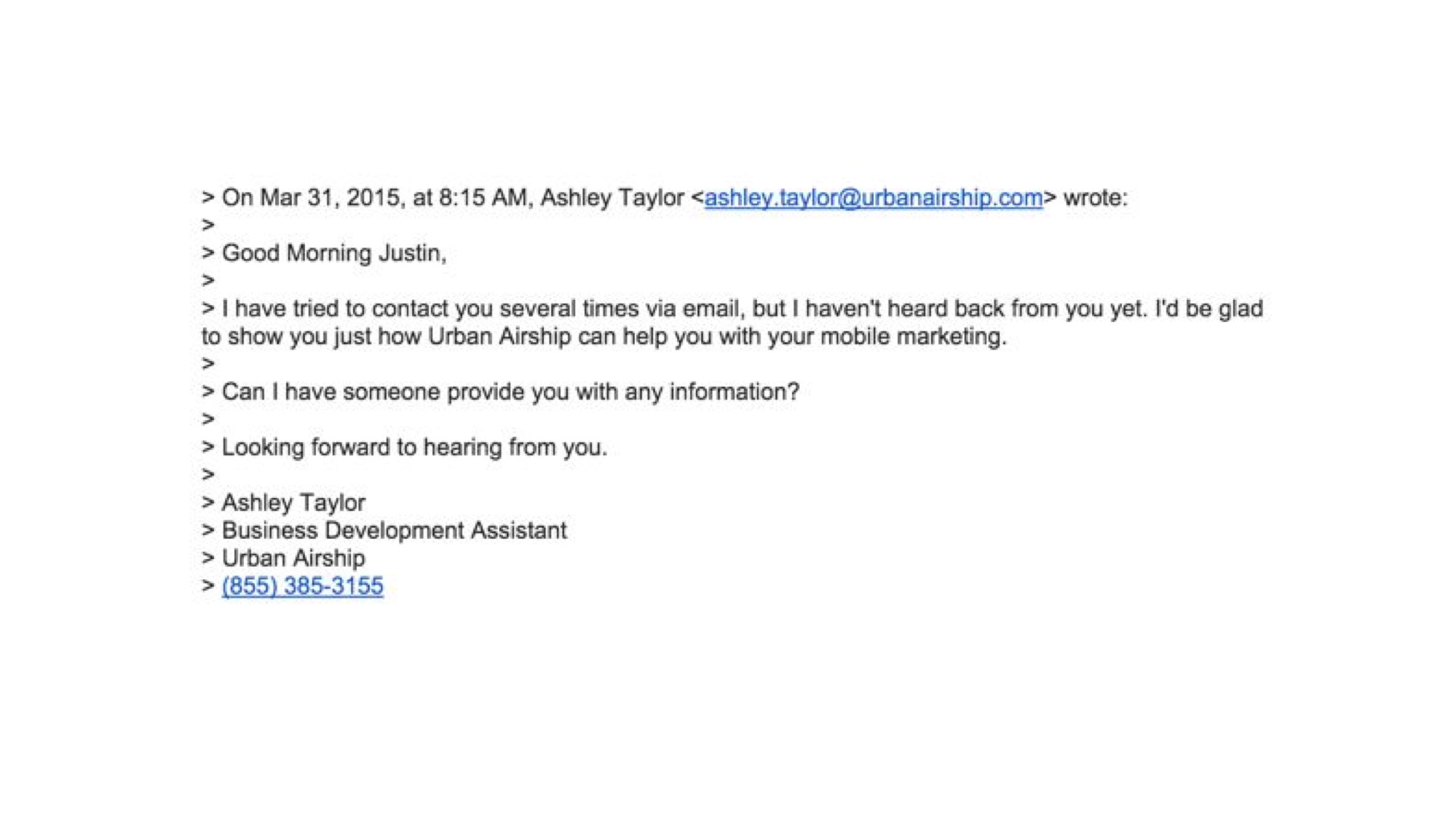 |
Here’s a typical email from her. Thanks for checking us out! Can we set up a call? |
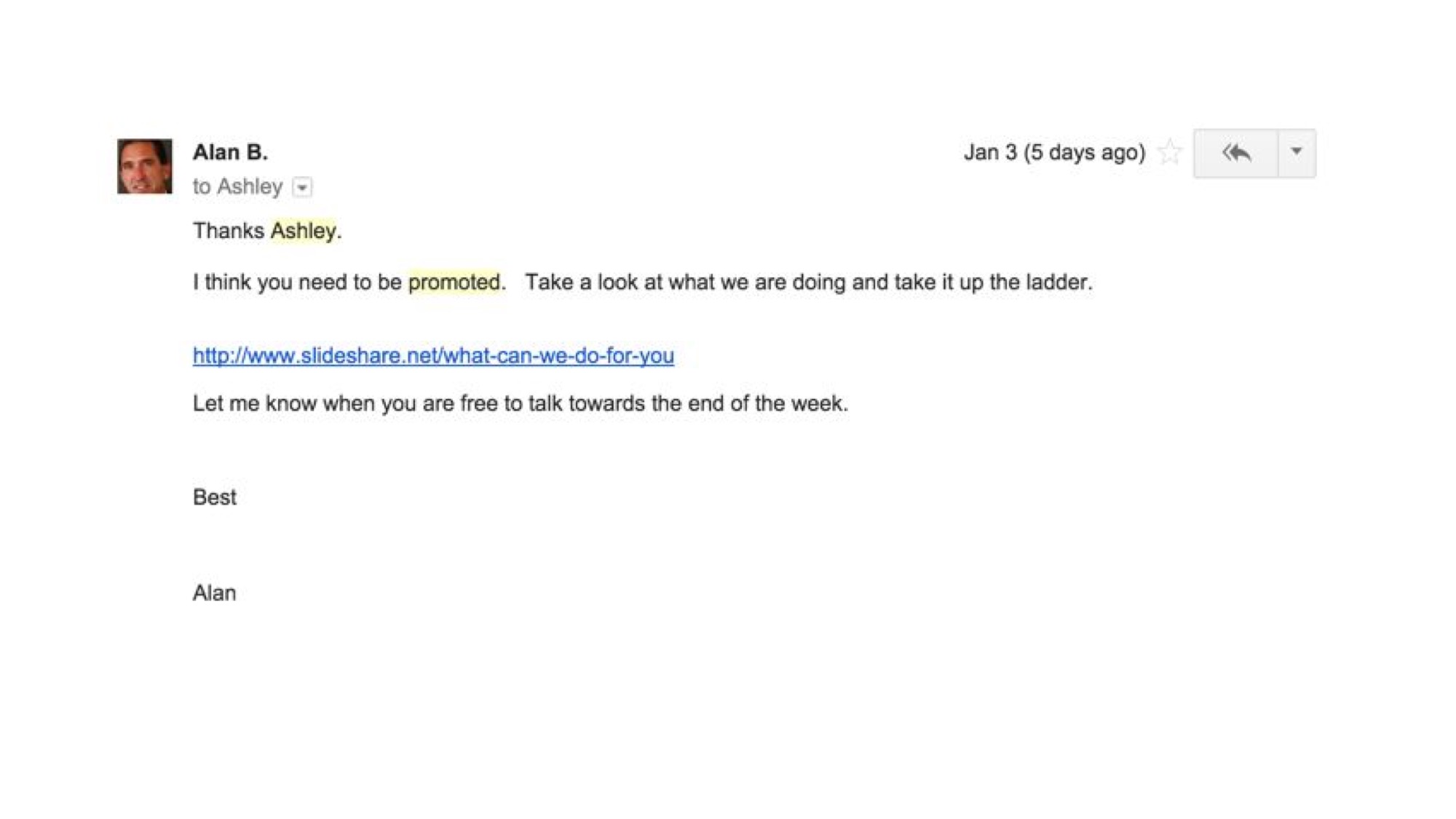 |
And people really engage with Ashley. Here’s an email that she got back, this is from someone who actually turned the tables, and tried to sell her, which I was thought was cool. But the point is, it’s just a couple of people building a sales relationship. |
 |
Except, Ashley is a robot. |
 |
She’s not literally a robot, she’s a bunch of computer code... |
 |
But she’s a product of a company that uses artificial intelligence to engage prospects. There are two major downsides, first of all, Ashley has to pass interested prospects off to a rep pretty quickly, and she’s just a conversational bot, she doesn’t understand what the lead is really looking for. But Ashley’s a great tool in the toolbox to start out with! And people really engage. A few months ago, I overheard a new hire talking about how he had to “apologize to Ashley Taylor” for being so unresponsive to her emails. |
 |
And so, my point, is that there’s a lot of room for us to use automation to build real relationships. |
 |
Now you have a website. |
 |
And you have visitors to that site. Lots, |
 |
and lots, |
 |
and lots, |
 |
and lots, |
 |
and lots, |
 |
and lots of visitors. Let’s say you get 60,000 visitors a month, and 10% of them turn into leads. That’s 200 people a day. |
 |
And what you hope is happening is this. There’s your prospect on the left, she fills out a form, she talks to your qualifying rep, that process goes well, she talks to another sales rep, that goes well, and you’ve got a deal. |
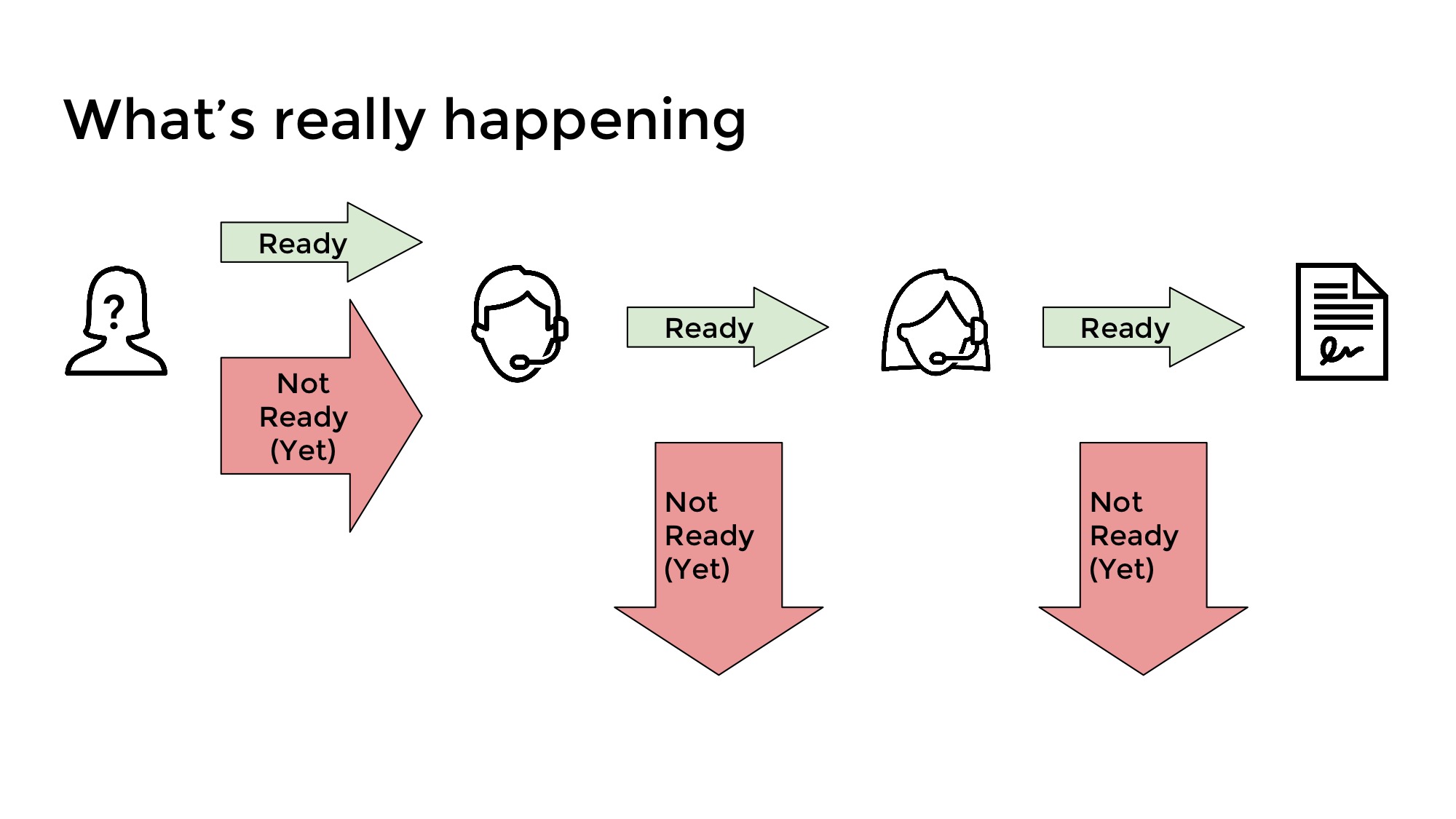 |
But what’s actually happening is this. You know almost nothing about the people who become prospects on your site. You might have their name, email, company, job title, and a couple of other pieces of data. But you don’t know: How far along they are in their search, whether they understand your product, whether they have budget, authority, need, timeline, whether they’re just “kicking the tires”, whether they’re a decisionmaker, and lots of other things that could potentially disqualify them. This is a problem for a few reasons. |
 |
One is, it wastes a lot of time. If 25% of your leads are actually qualified, increasing that number to 50% could potentially double your reps’ productivity. |
 |
Two is, a lot of prospects don’t want to talk to sales yet. If you go over to a gym and you say you’re not ready to join, they’re going to sign you up for a trial membership. Then they’re going to call you, or maybe text you, when it ends, repeatedly. |
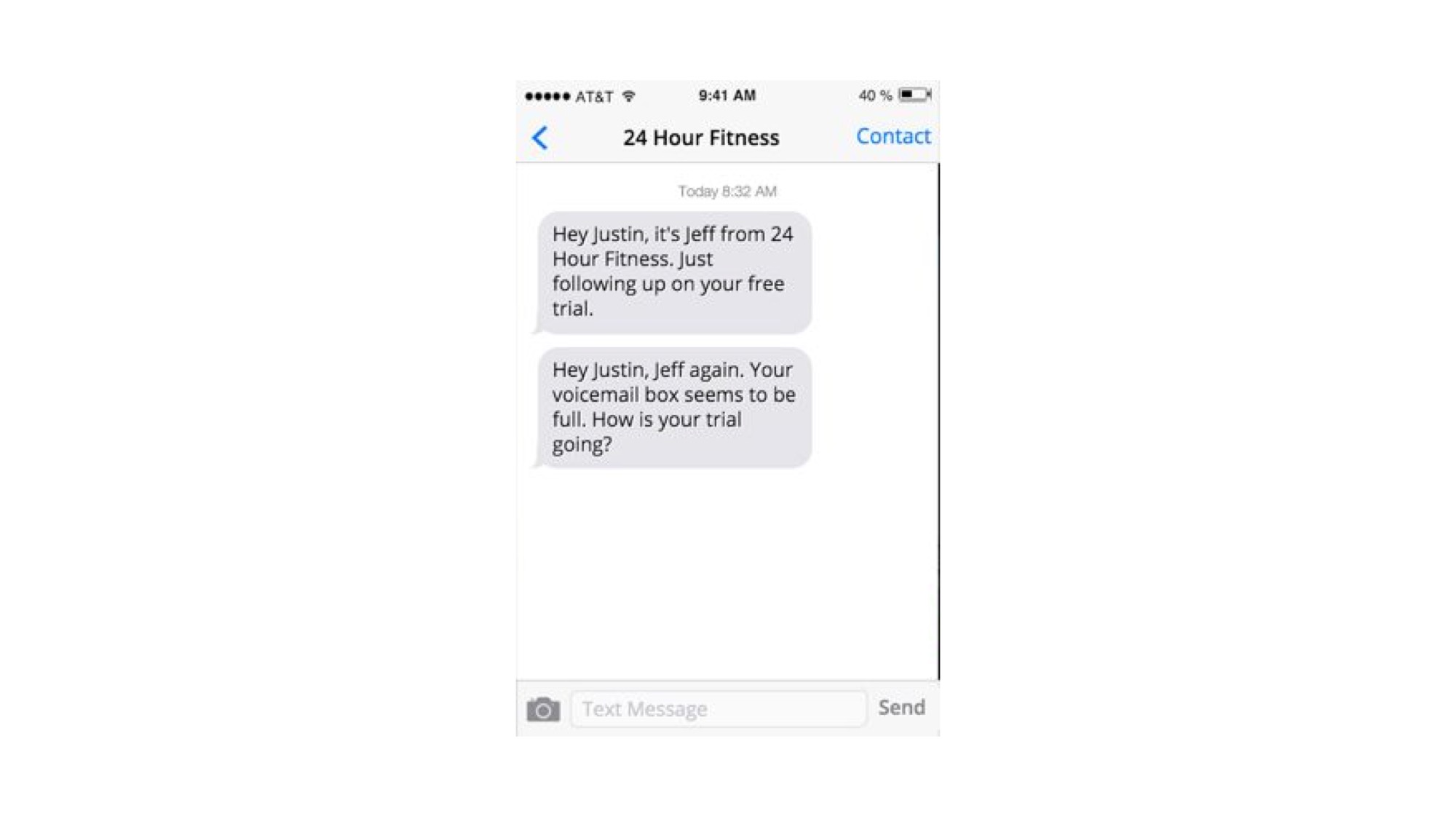 |
They got you engaged, you weren’t ready to buy, so they gave you a way to get ready to buy, and then they follow up. |
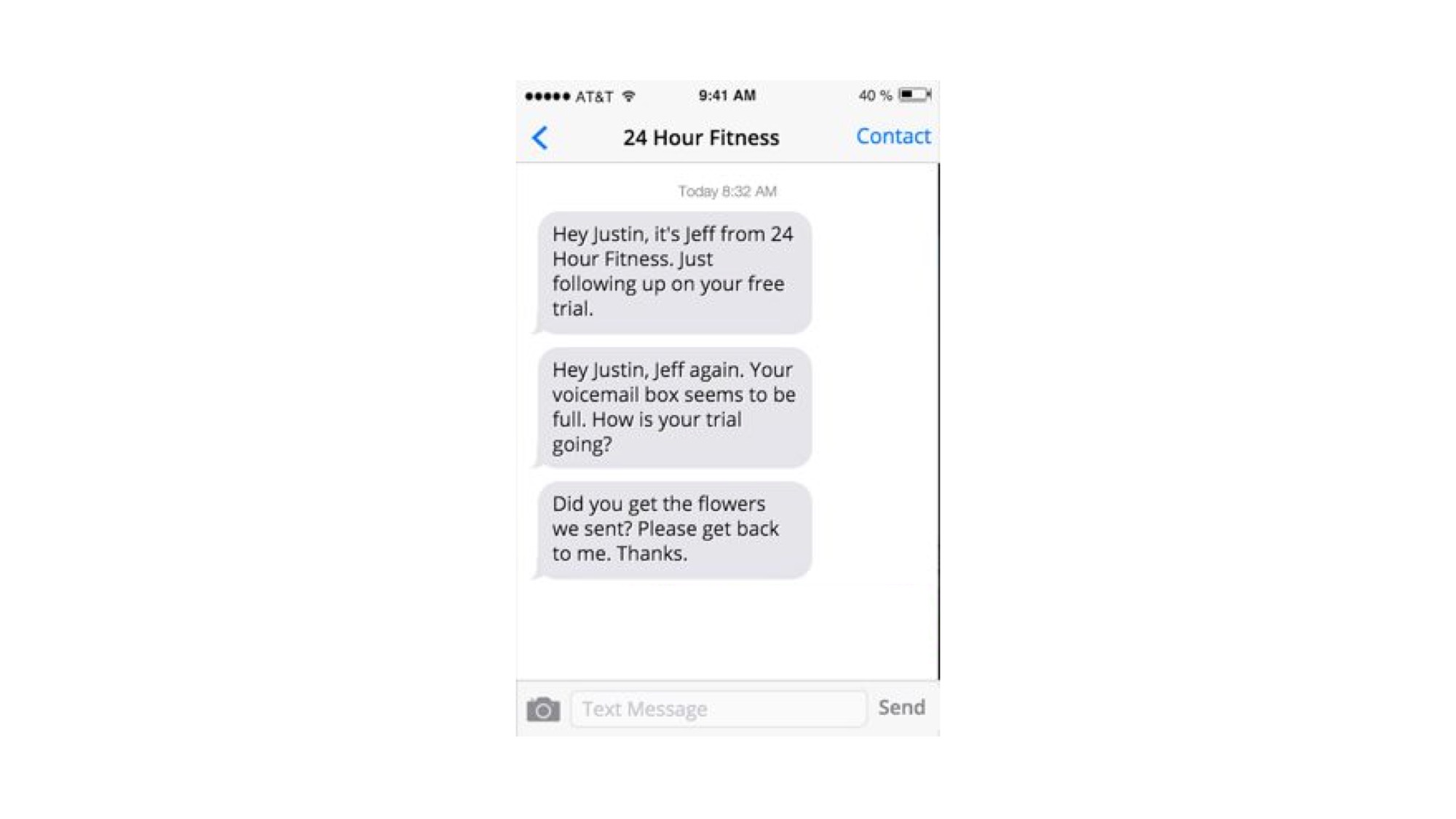 |
A few times. People usually hate this. This is not valuable to me. |
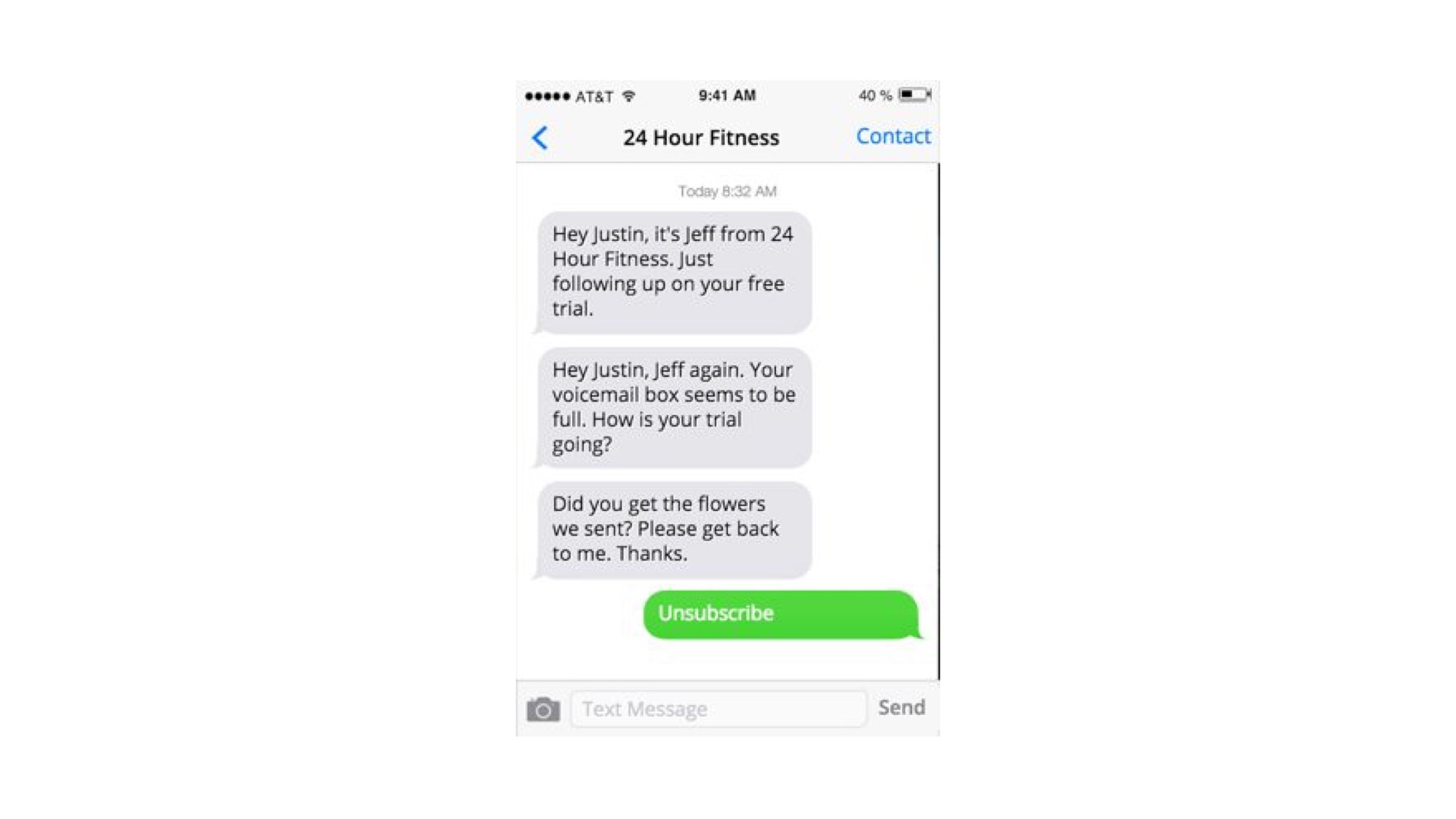 |
And you should hate it too. You should want to have reps talk to leads who want to talk to you. |
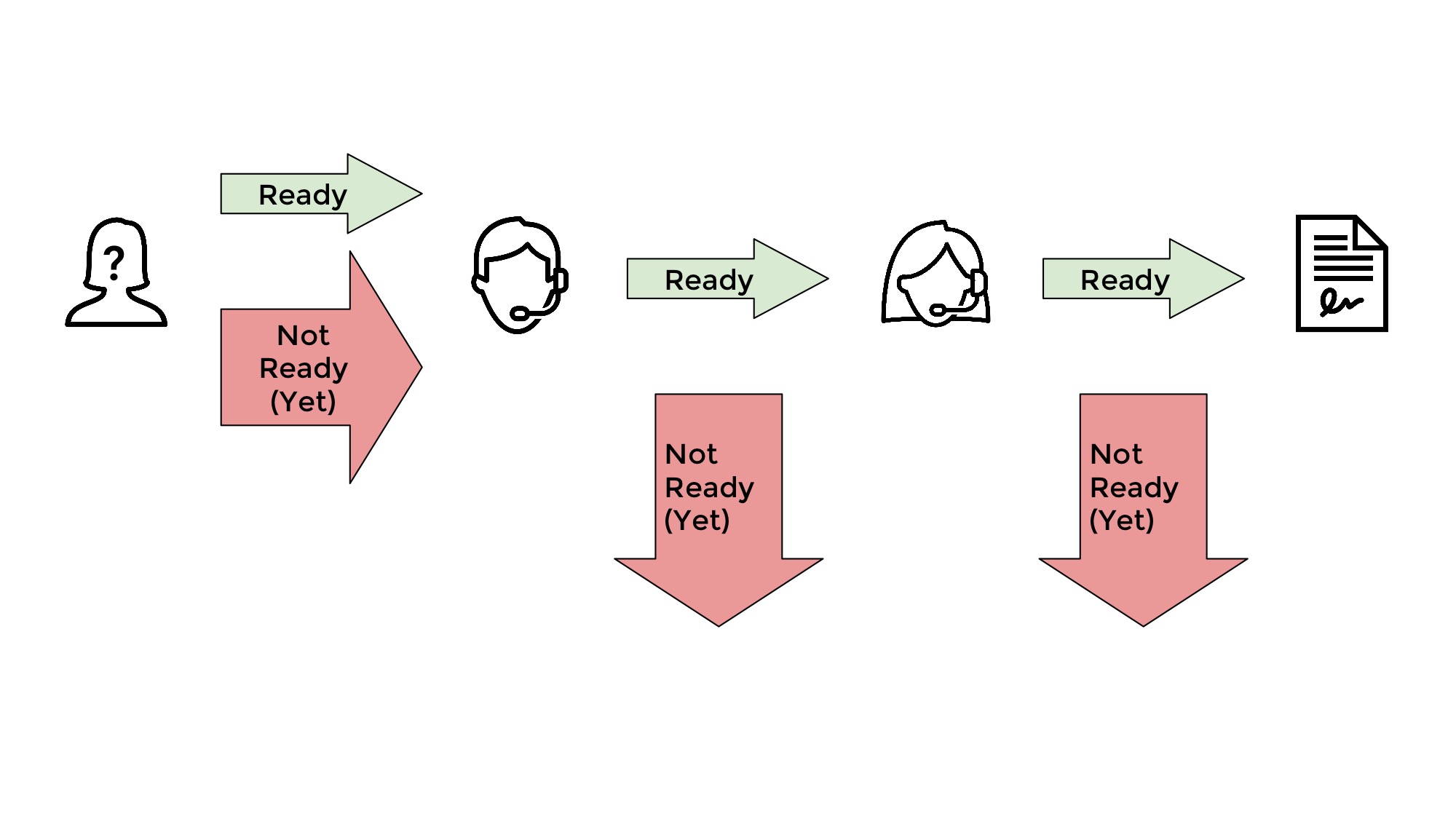 |
Three is, people are getting into your system, and if they leave your site, and they don’t want to, or simply don’t, talk to a rep... |
 |
They’re gone! |
 |
And by the way, they’re checking out all your competitors in the meantime. |
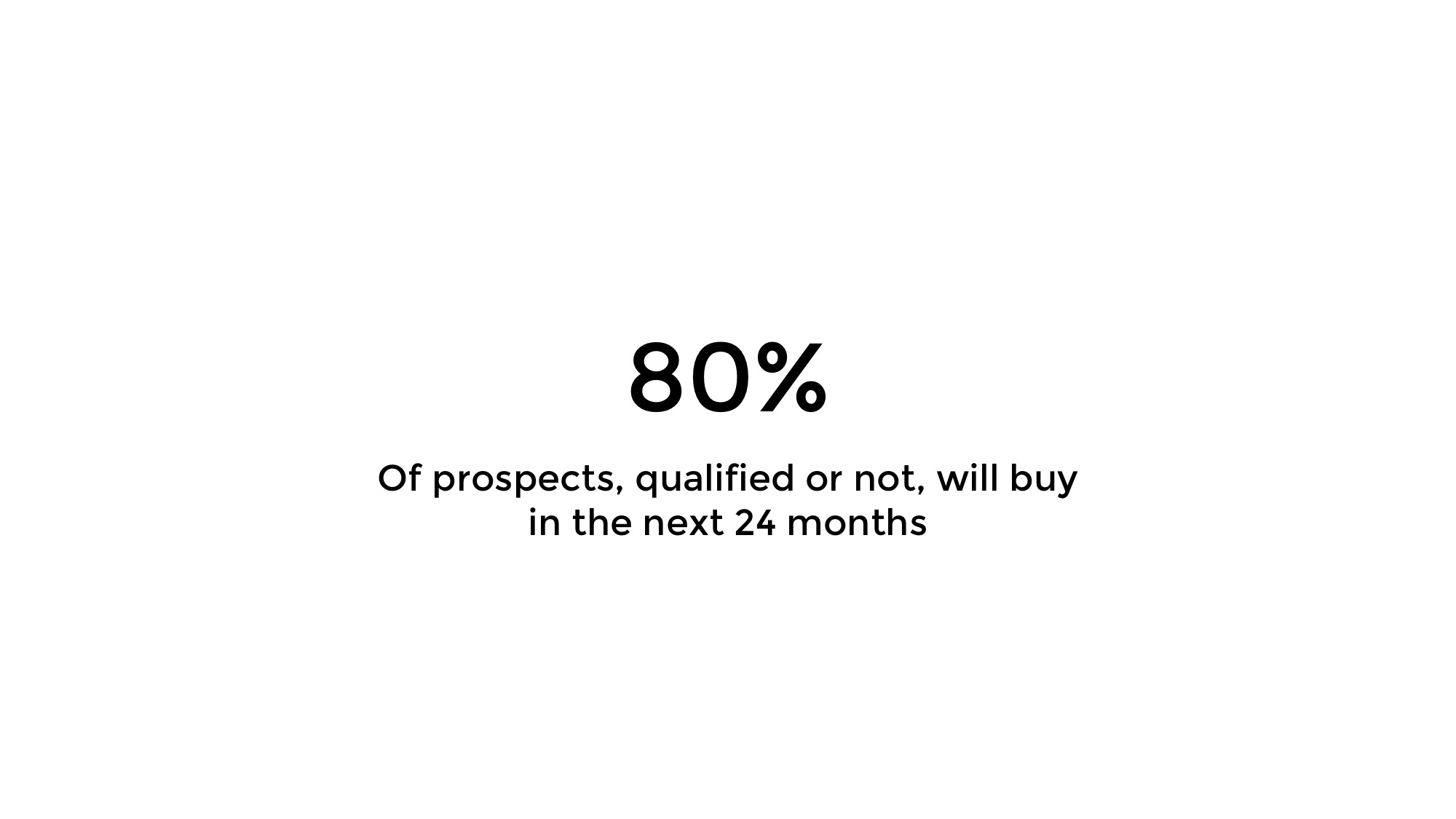 |
Act-On, local marketing automation company, has a stat that something like 80% of prospects are likely to buy within the next 24 months. I’m not sure how important the specific number is, but you know how it goes. The decision usually eventually gets made. |
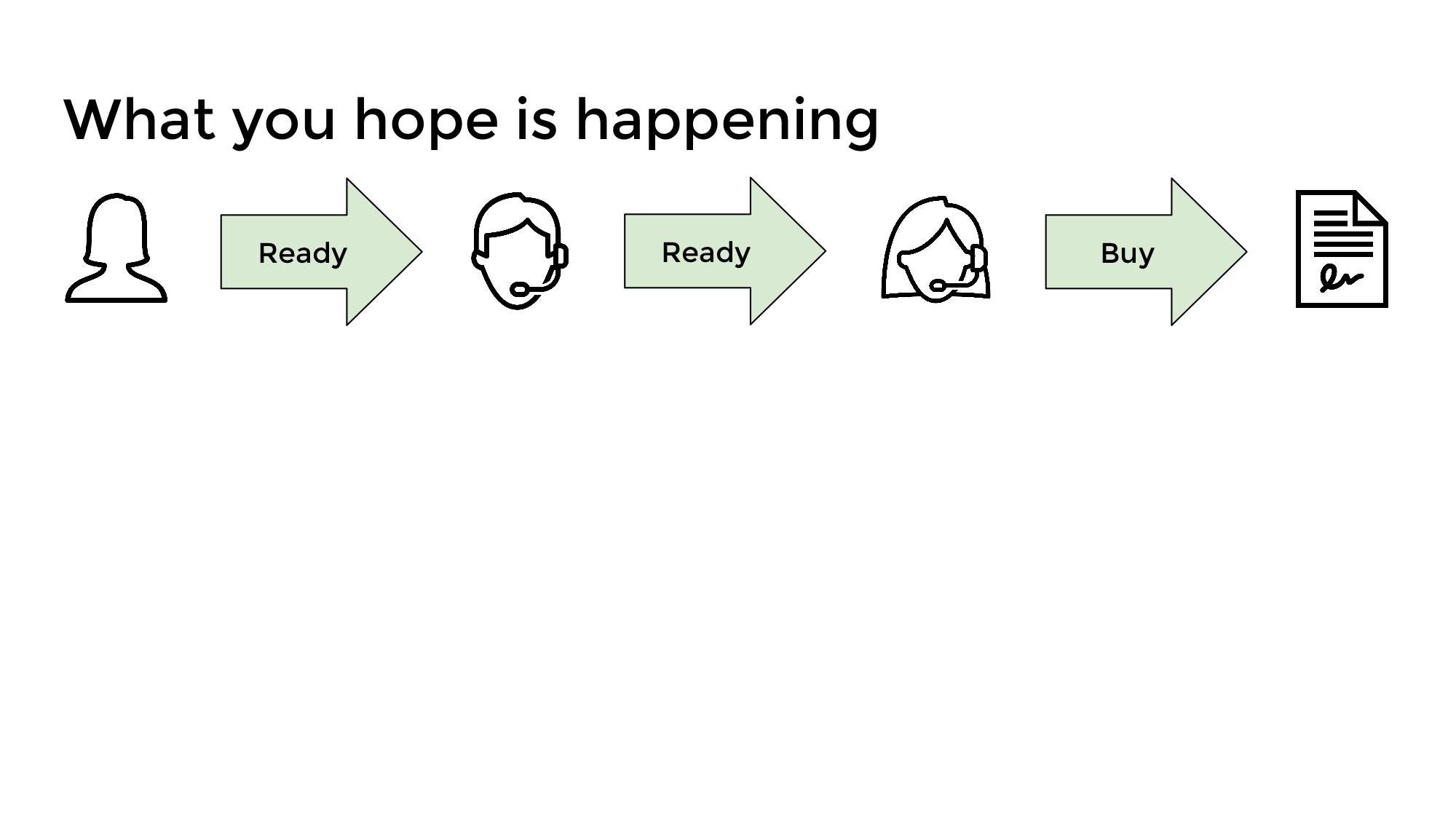 |
So you want it to be this... |
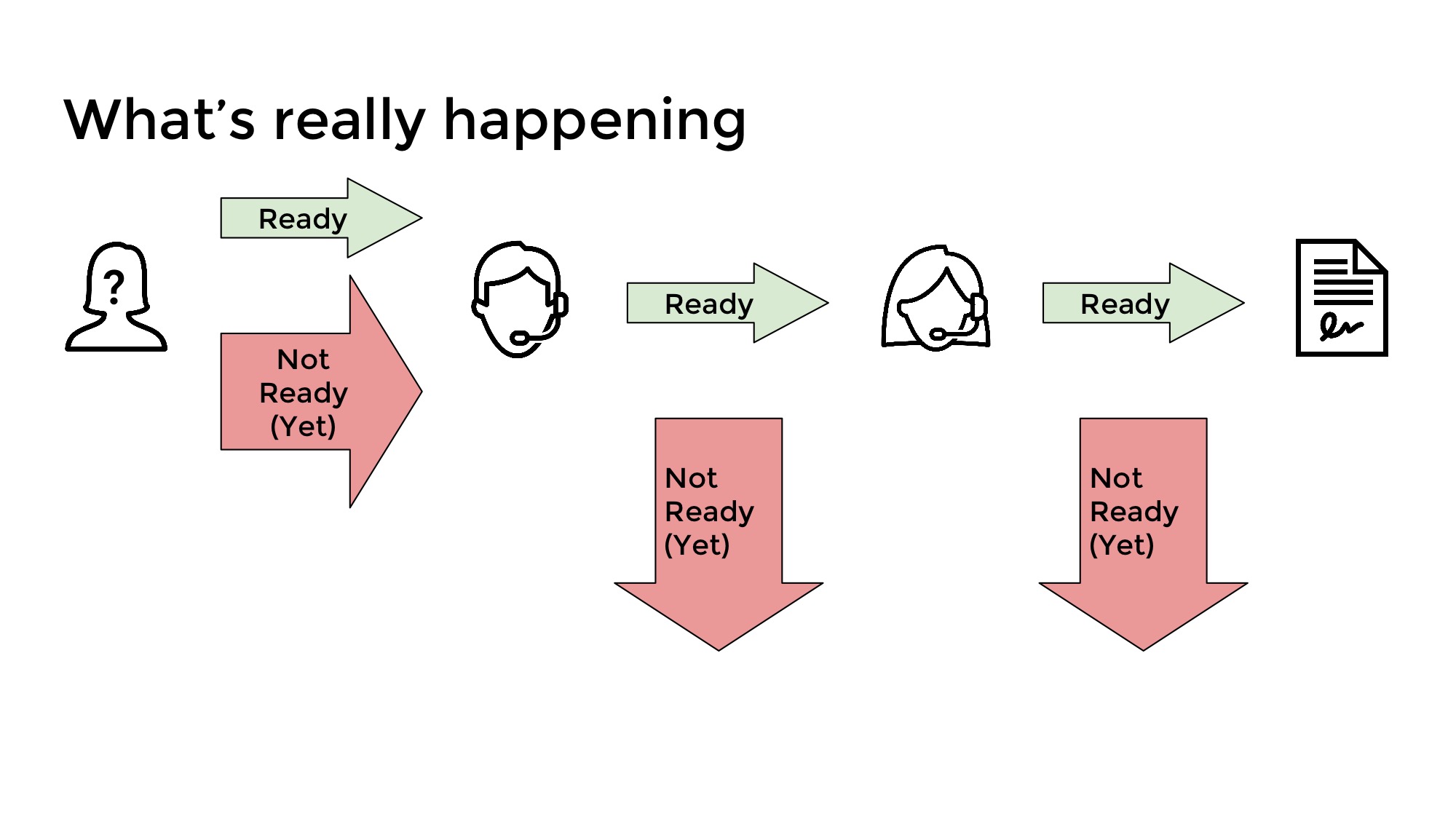 |
But it’s actually this. |
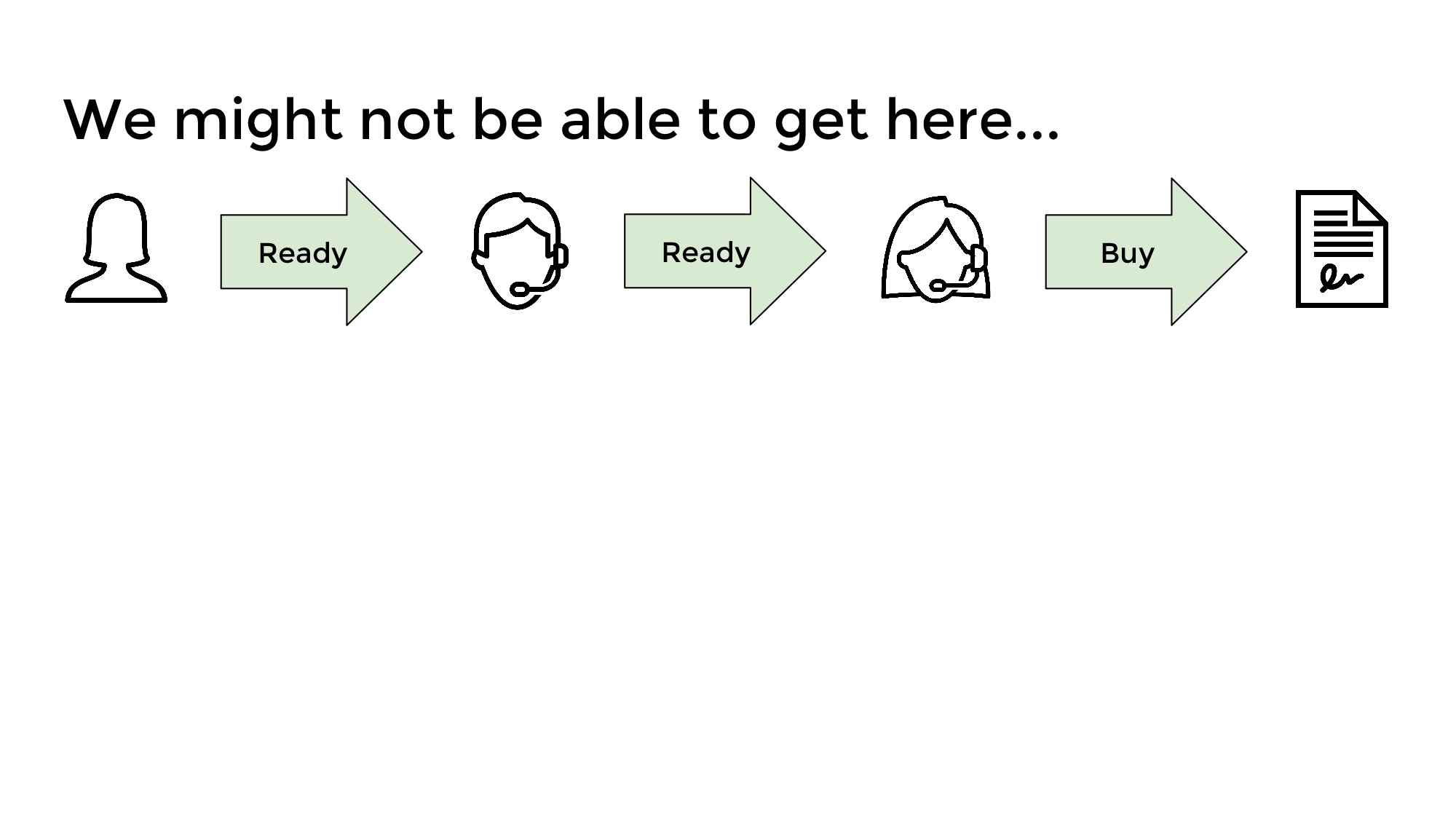 |
And we’ll probably never get to this... |
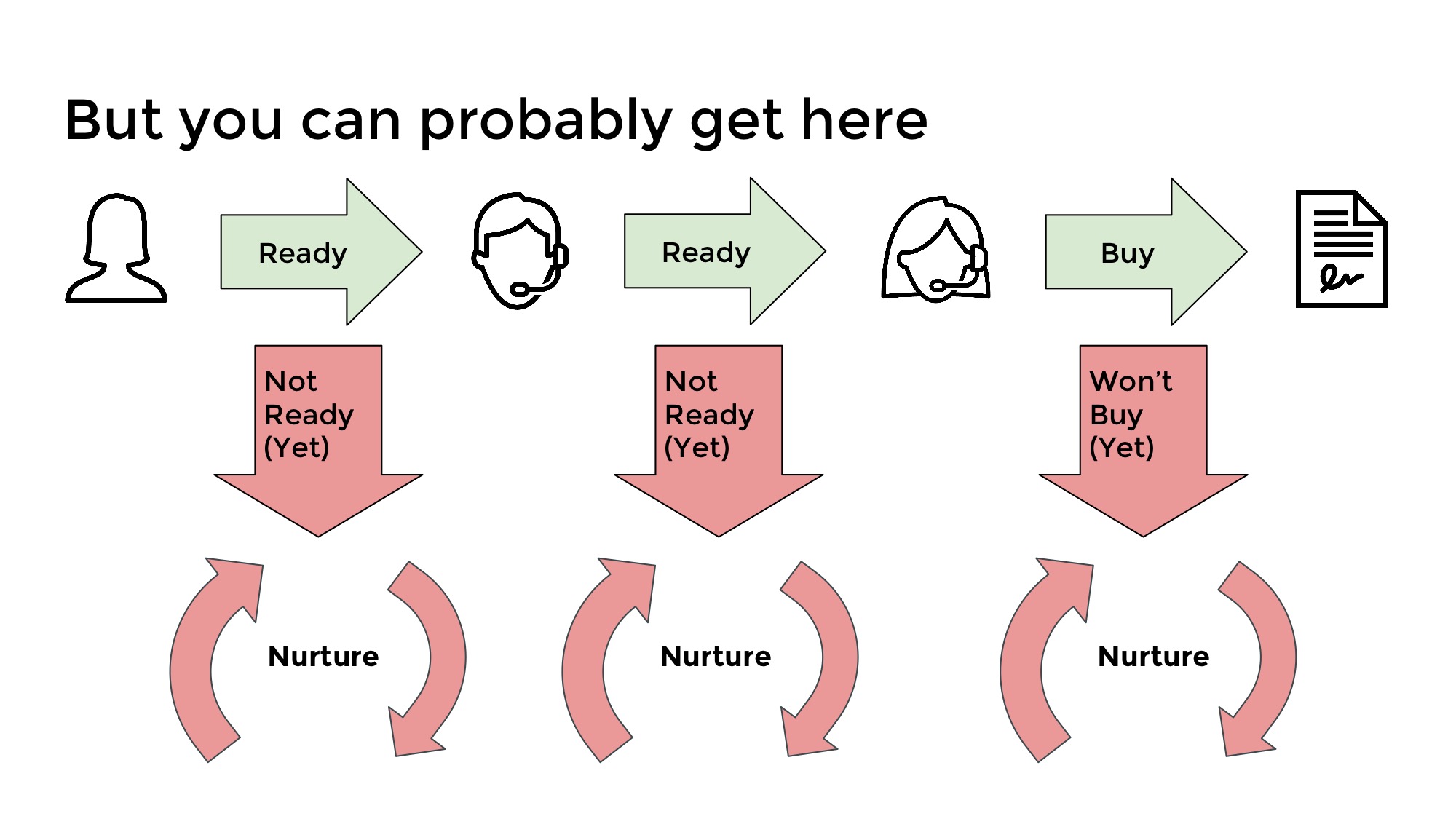 |
...But we can get to this. |
 |
It's a really nice place to be. |
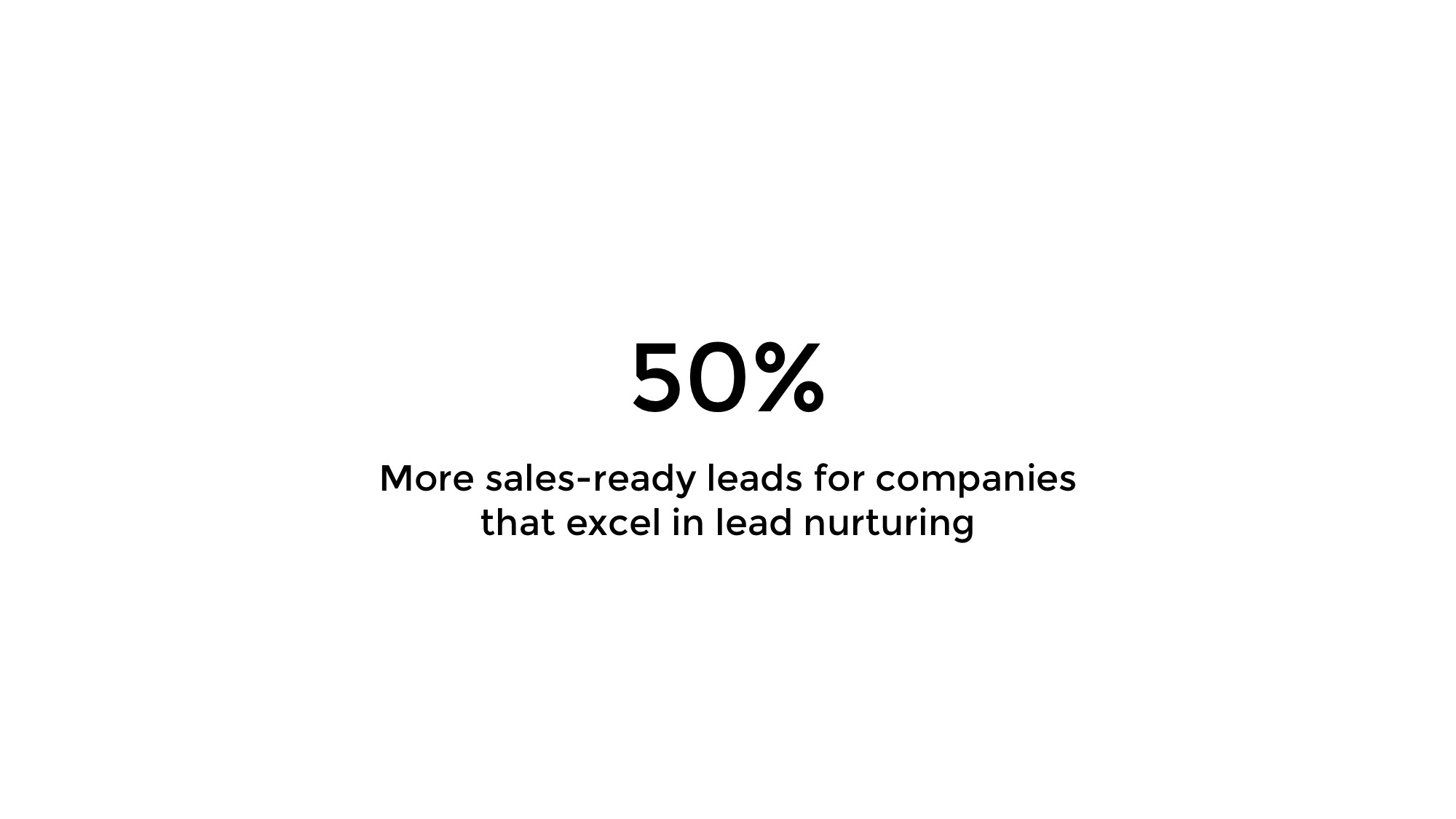 |
According to Forrester Research, companies that excel in lead nurturing generate 50% more sales-ready leads... |
 |
And they do it at 33% lower cost per lead. |
 |
This is where marketing automation comes in. Marketing automation is largely about being able to build that relationship with your customer, so that you understand them, and they understand you, with a minimum of expensive sales conversations. It’s also about keeping engaged with them, so that they come to you when they’re ready to buy. |
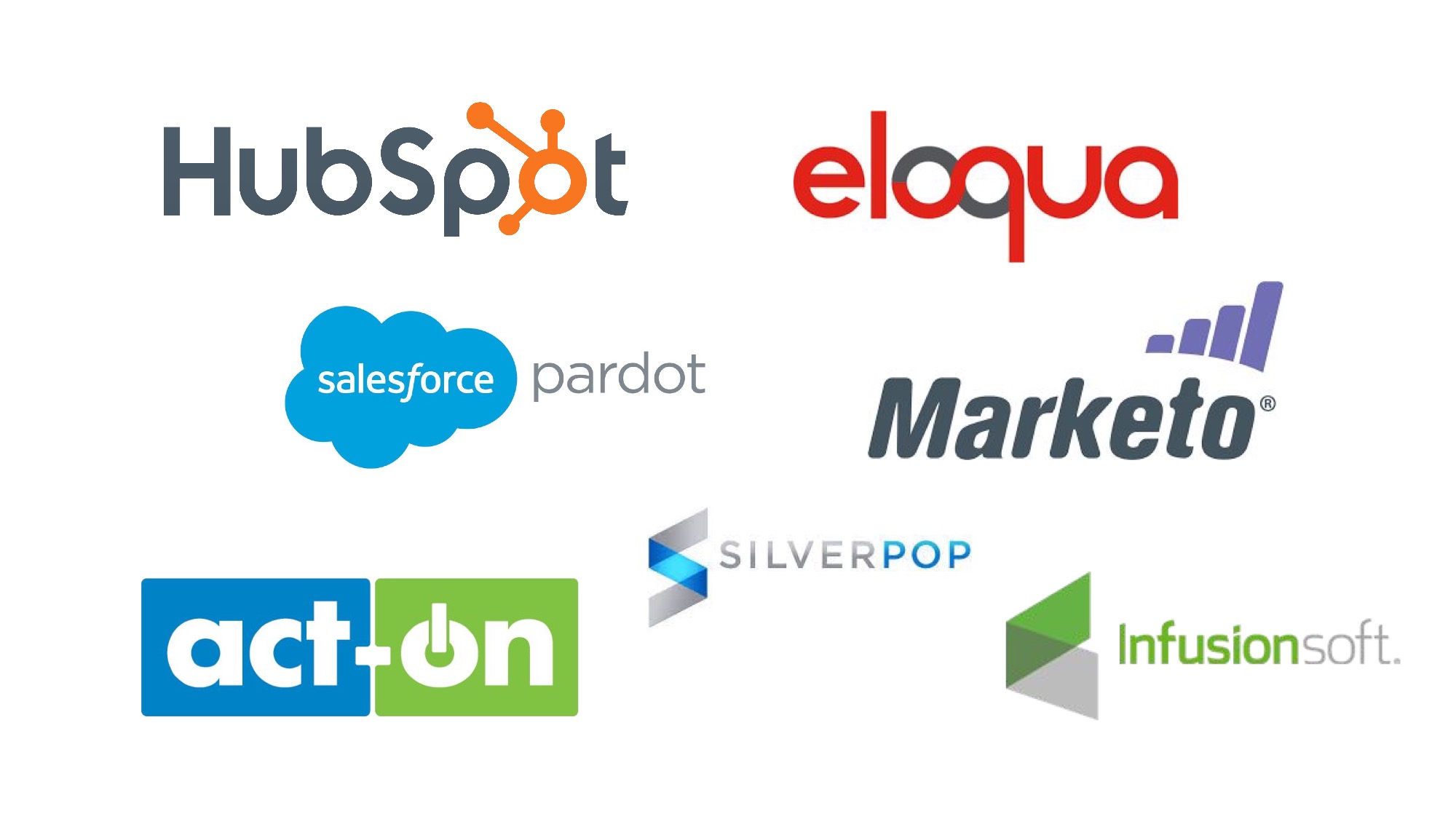 |
What is marketing automation? Here are some examples of vendors, names we all know. They offer lots of different features... |
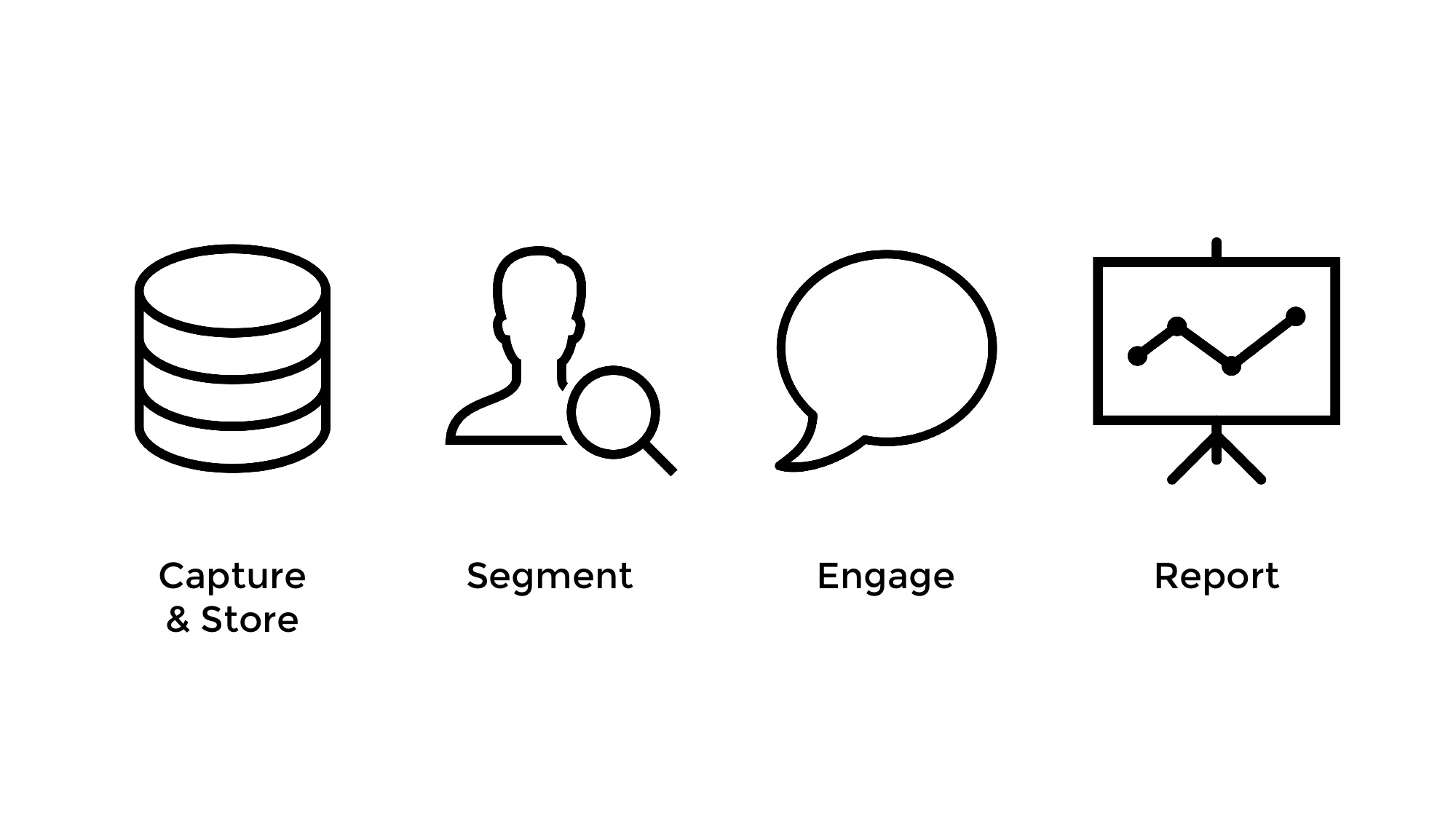 |
At the heart of marketing automation, you’re really doing four things. Capture and store prospect information; segment your prospects, to figure out what they’re interested in; engage with prospects, usually over email; report on whether your engagement efforts are working. |
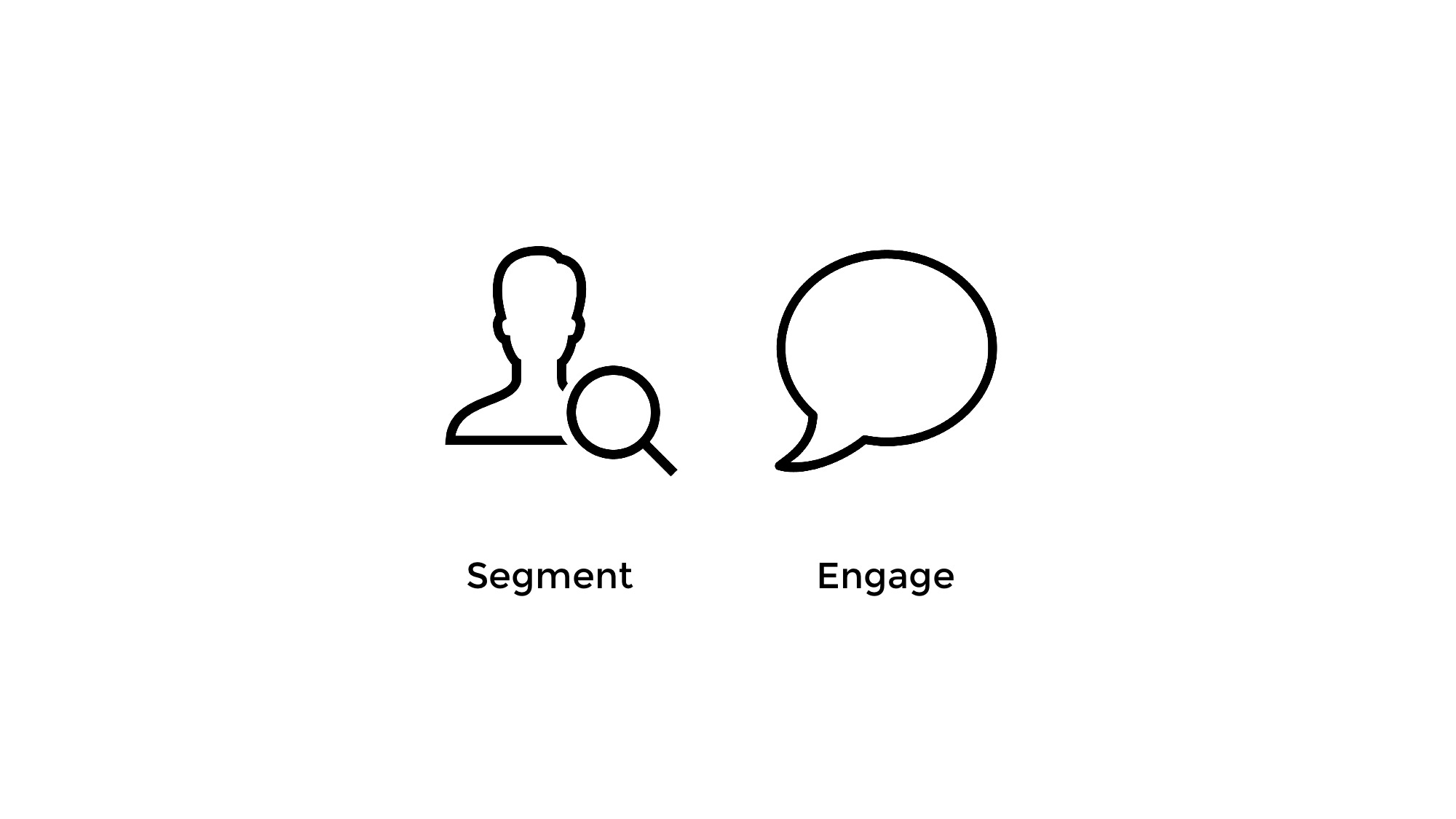 |
And it’s really, really about understanding your prospects and customers, and communicating with them in a way that’s relevant for them. It’s about building the relationship, in a smart, scalable way. |
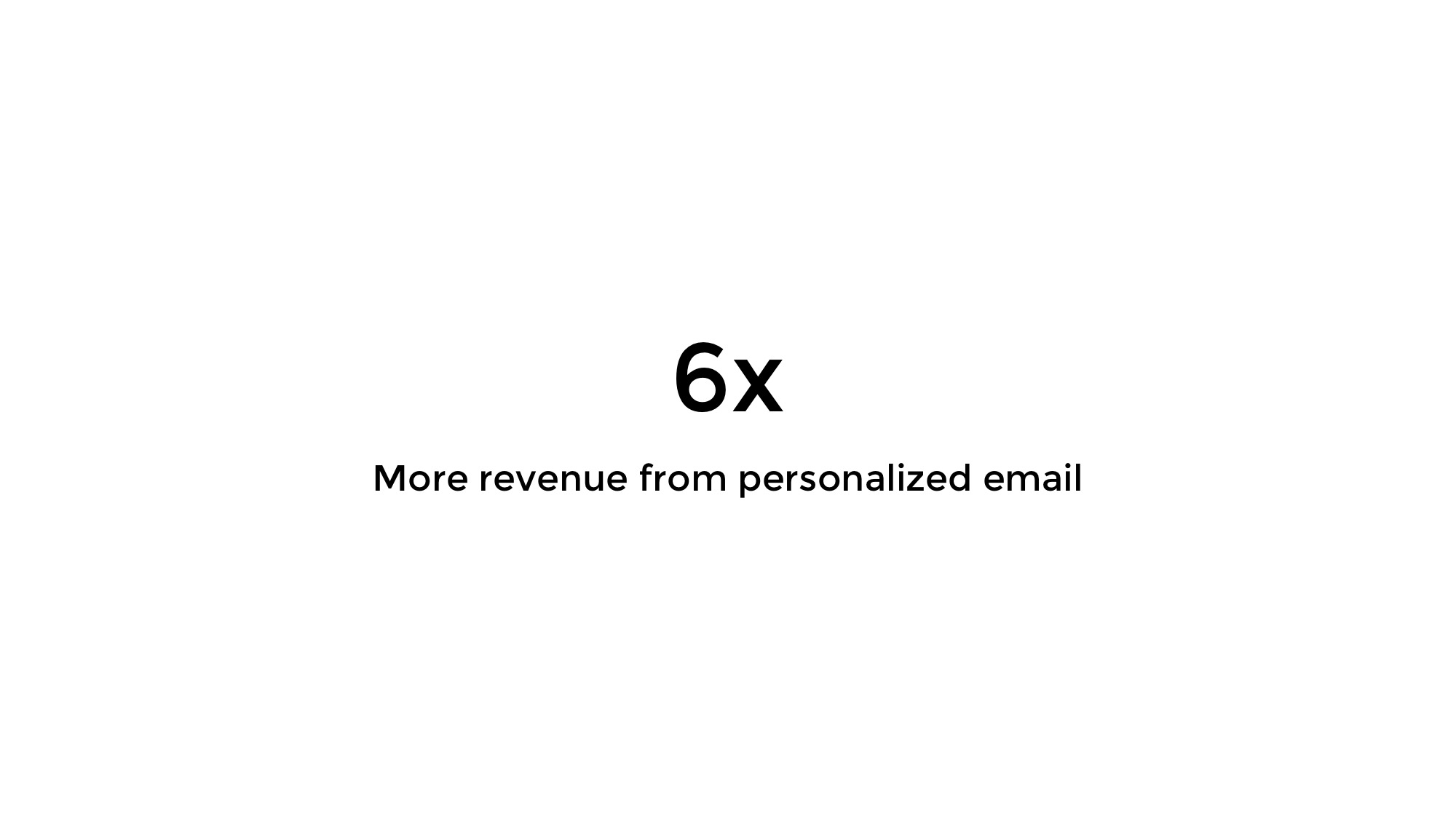 |
And all this stuff really drives revenue. Experian did a study that said that personalized emails can generate up to 6x more revenue per email than generic email blasts. |
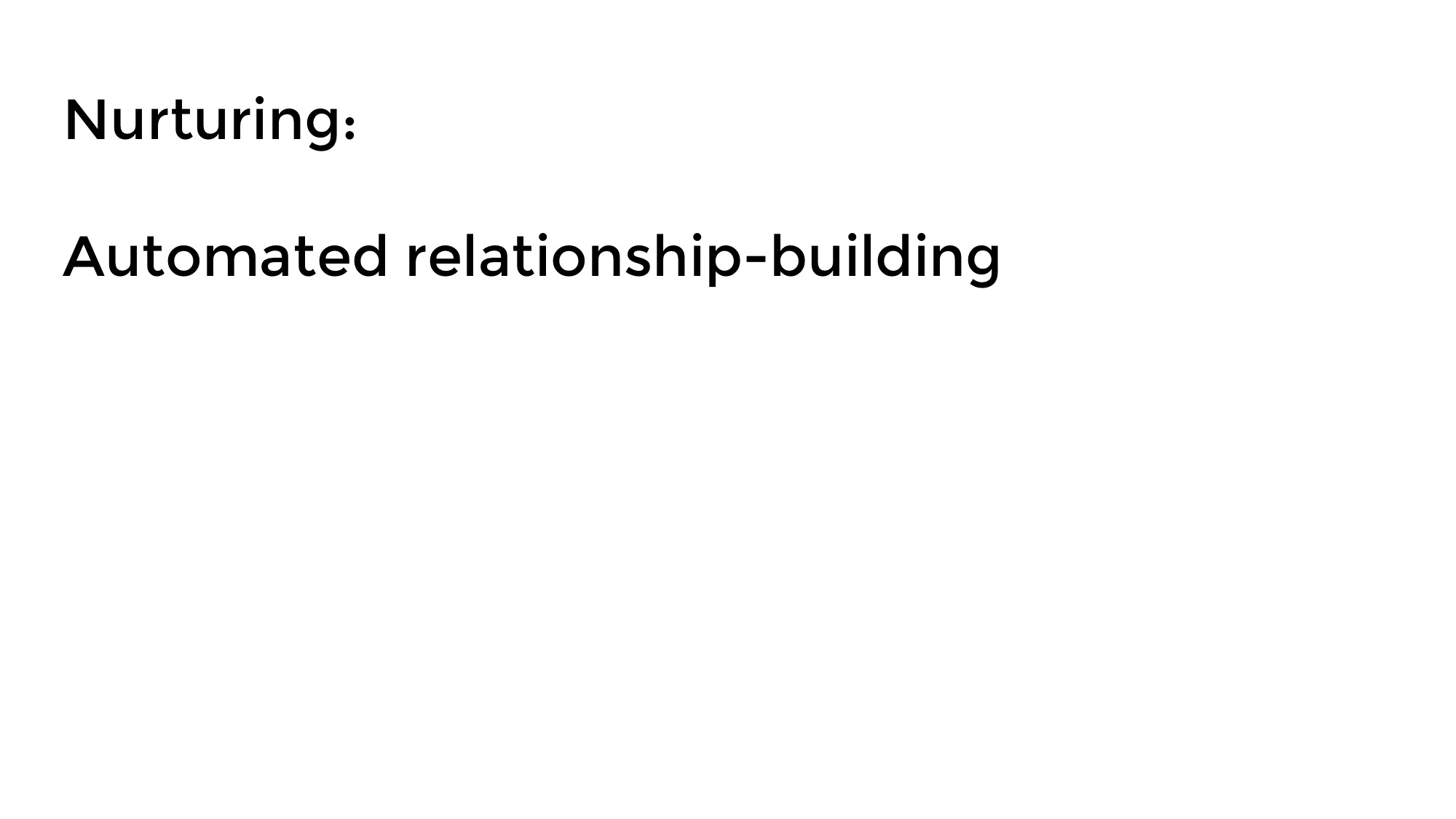 |
And that’s how I’m going to define nurturing for you. All nurturing is, is automated relationship-building. |
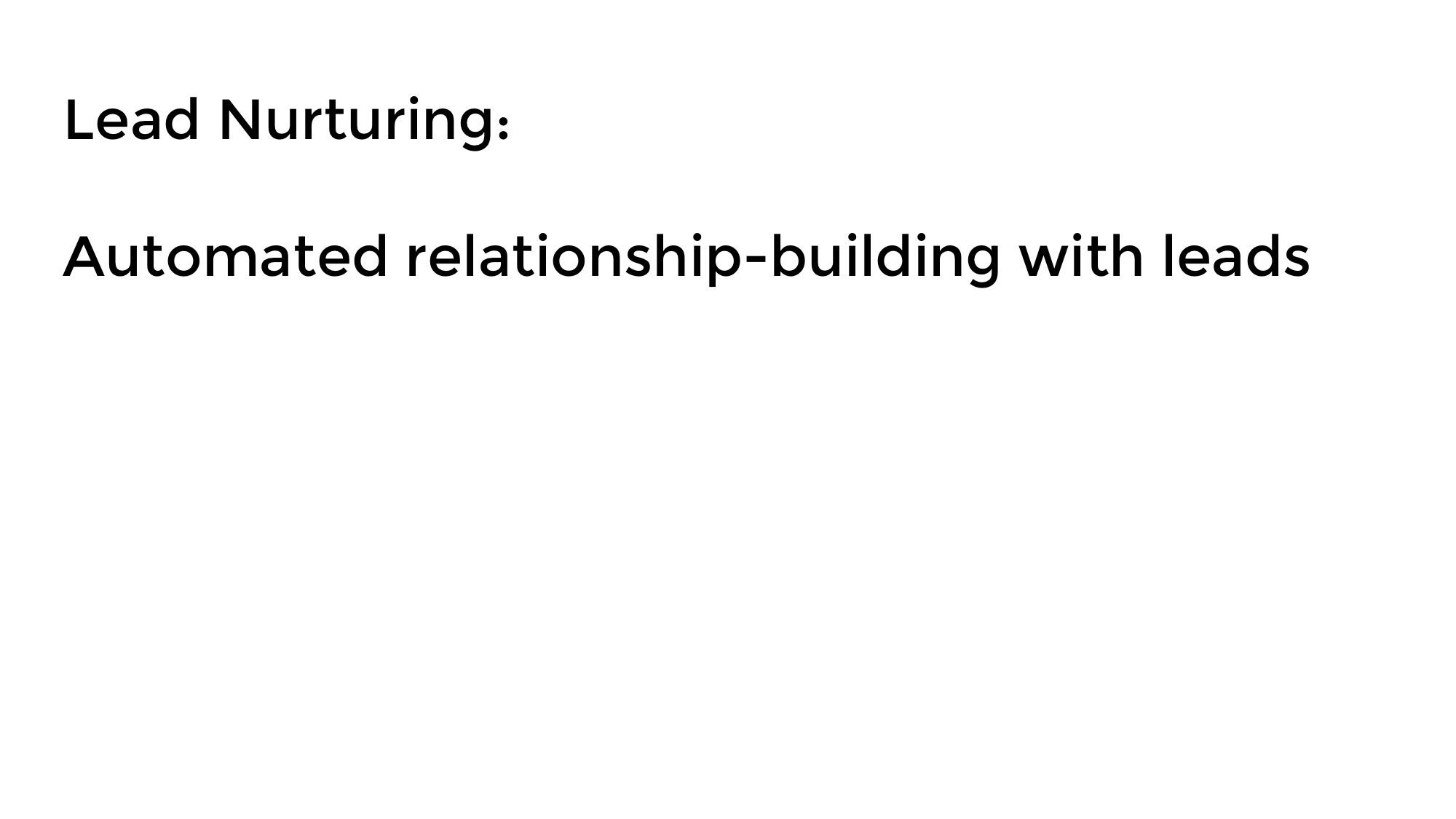 |
And of course, lead nurture is doing that for your leads. It’s using the capabilities of a marketing automation system to build content flows, and deliver content flows, that provide something of value to prospects, which is the best way of developing a relationship with them. |
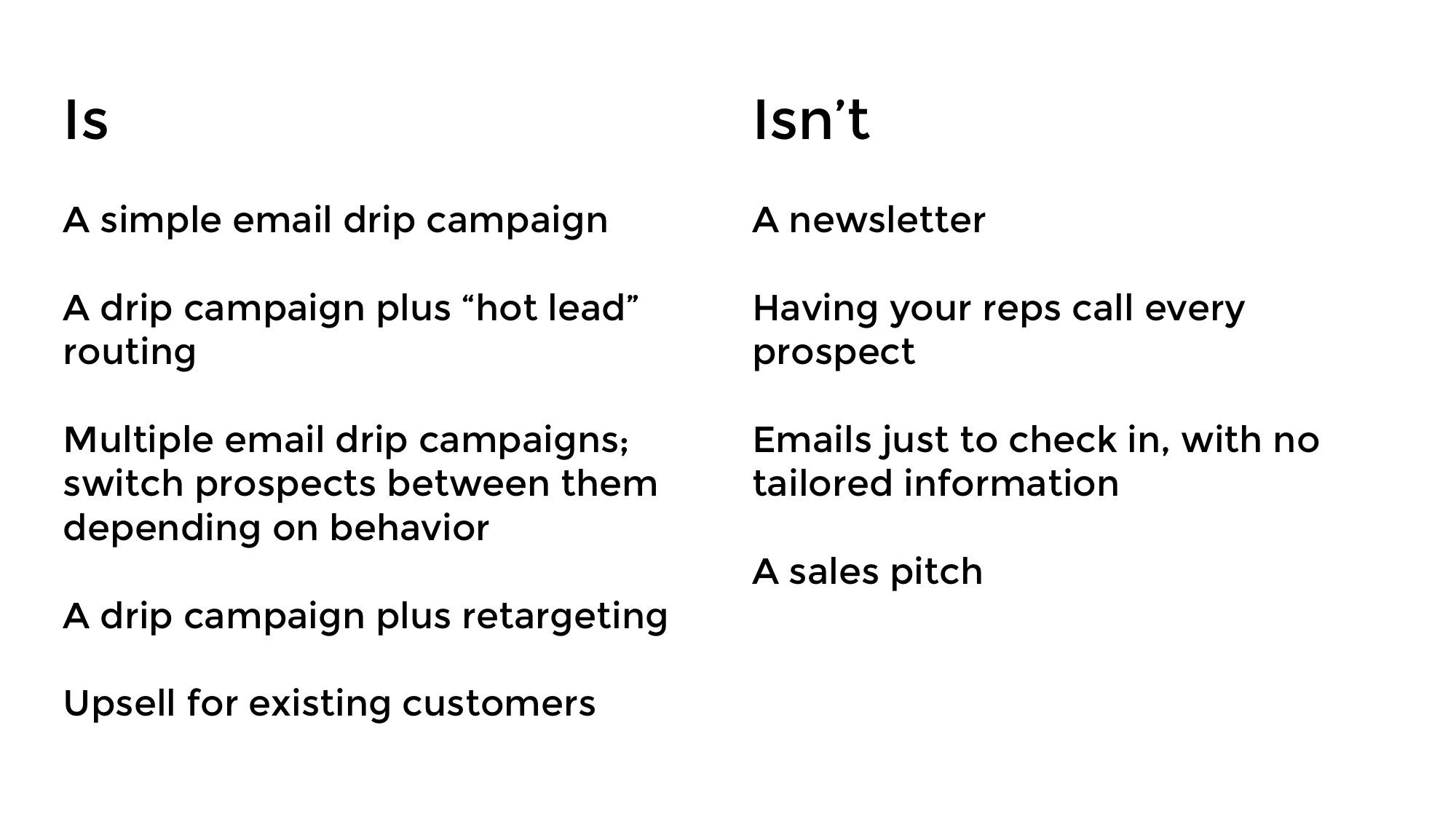 |
So here are some specific examples of what I’m talking about. And the overall point to all of these is that the relationship-building process is about providing something valuable and useful. Because after all, your product is valuable and useful, right? Something that's automated, scalable, and tailored to what the user wants. |
 |
And that’s the first thing I would say makes a good nurture program. It’s all about taking advantage of segmentation in your marketing automation system, and using that in your nurture programs. The more responsive it is to who’s in it, the better it’s going to work, the higher the likelihood that it will improve your relationships with your prospects. |
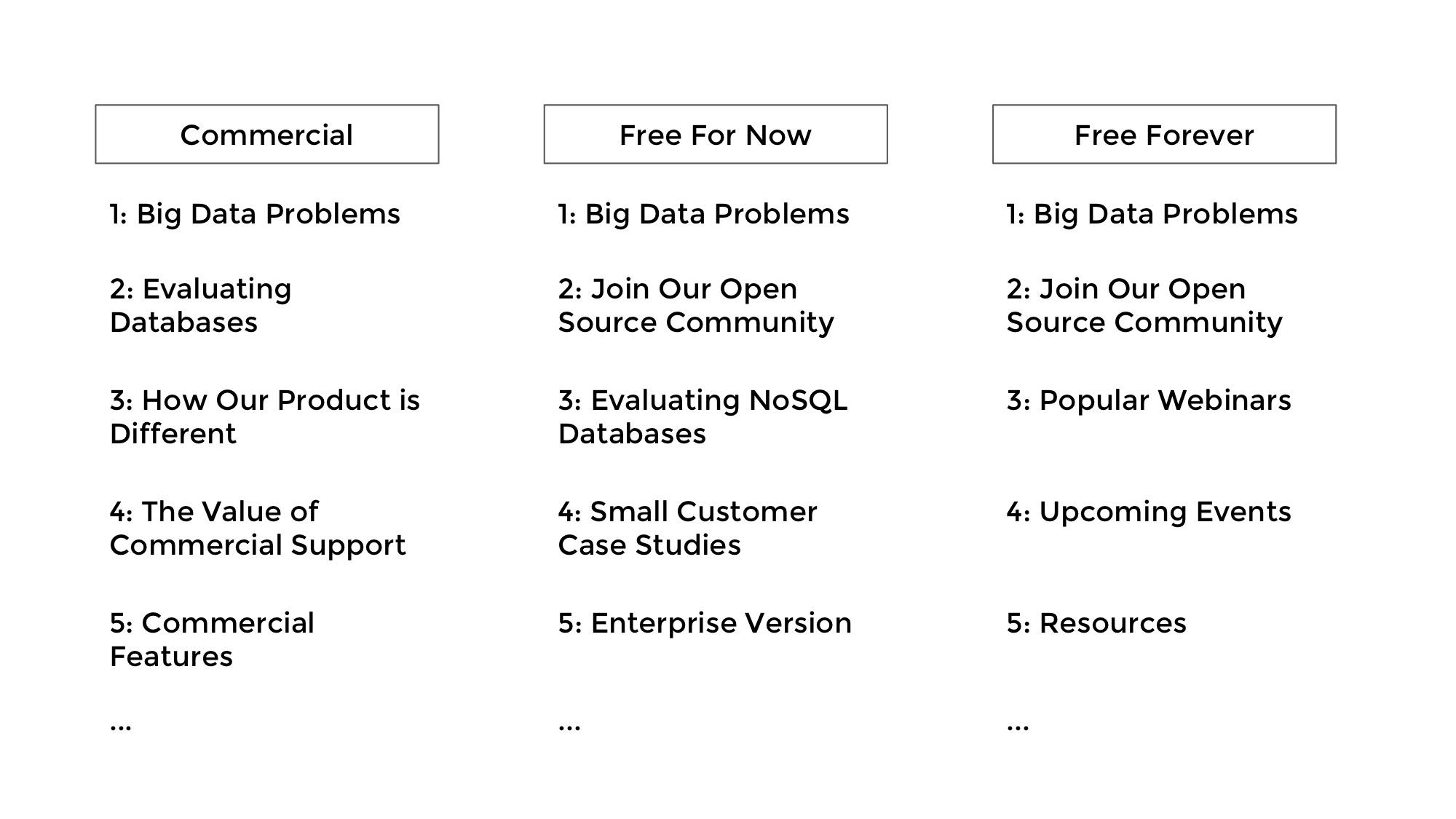 |
Here’s an example of how I did that in the past... we divided our database into Commercial, Free For Now, and Free Forever, and nurturing these leads according to which segment we thought they fit in. Commercial leads could potentially buy our commercial product; others we expected to use our free product either temporarily or forever. This is of course a simplified example. |
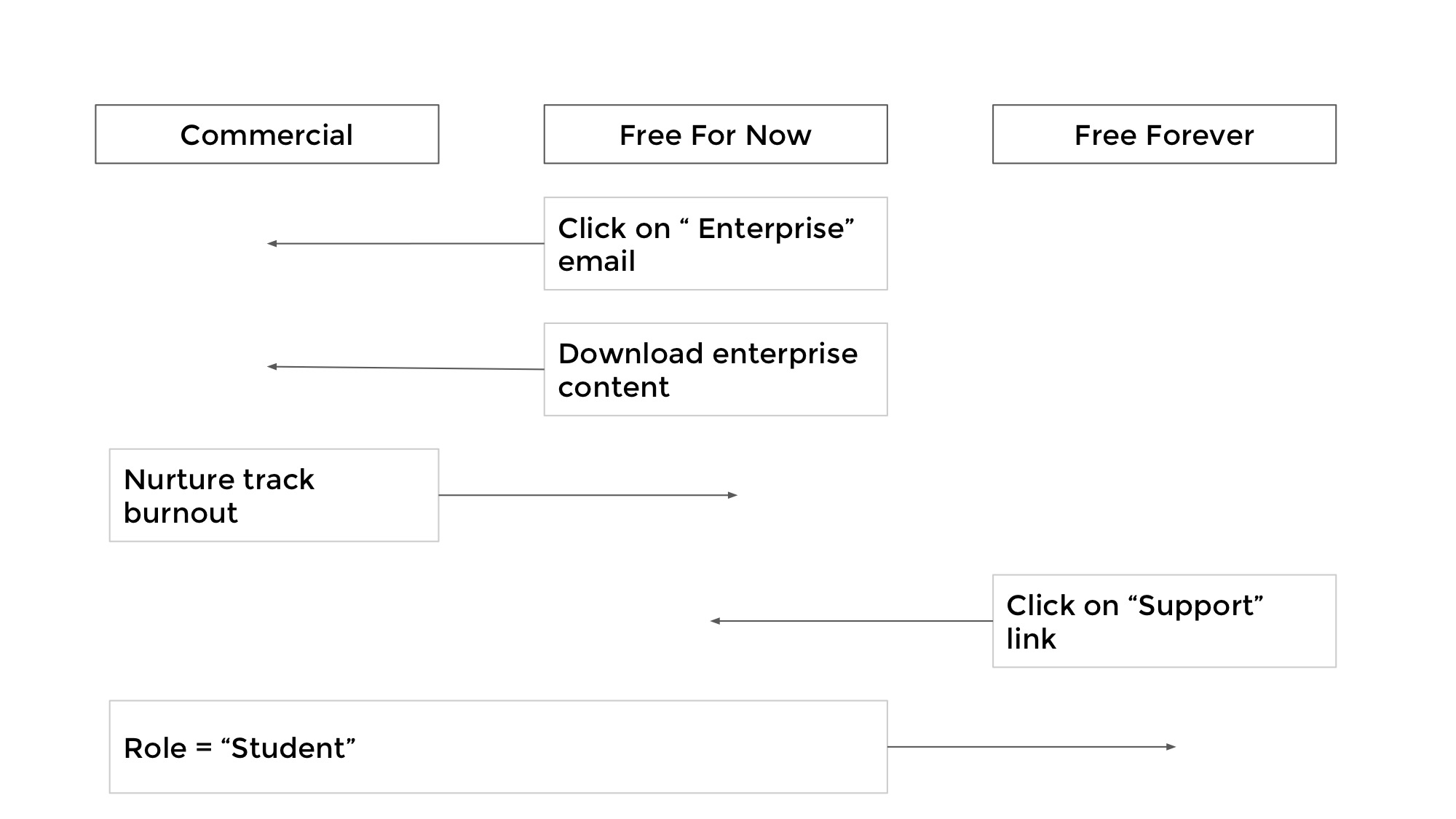 |
And people could move between the tracks depending on what they did. So, for example, if they expressed interest in a Commercial offering, we could move them into that stream. If they ever told us they were a student, we could move them immediately into the Free For Now stream. |
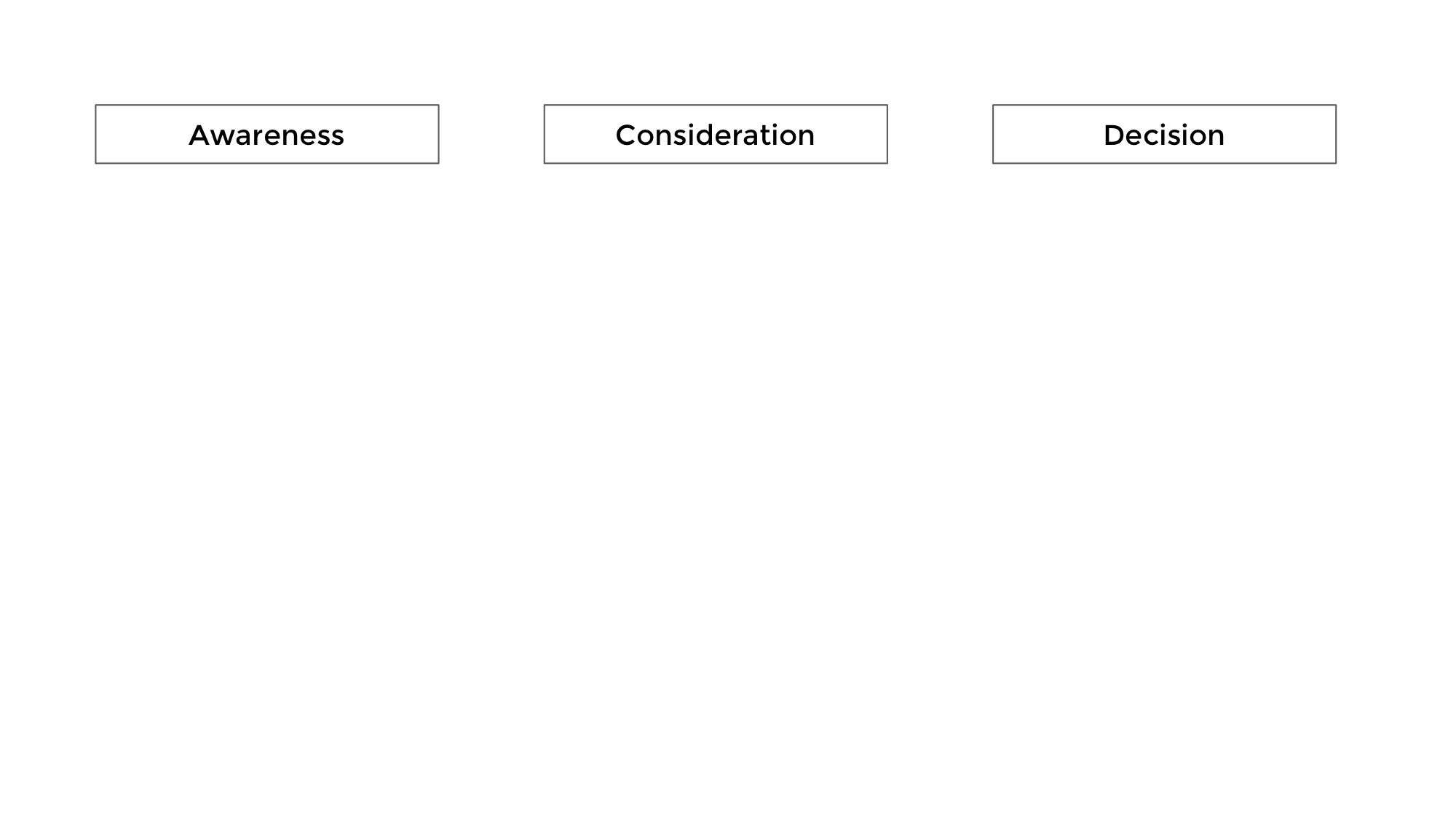 |
Some companies do it by stage. This is a really nice way to do it, because you can add all of your content to one of your tracks, and keep adding. And it also doesn't rest on the assumption that you know exactly where the buyer is -- you're not trying to get them through the entire process in one track. |
 |
And you can compound dimensions. |
 |
You can make it really, really segmented. You’re always going to have a tradeoff in the return from further segmentation, but nurture tracks make something like this manageable. |
 |
And here’s another thing. The content has to be useful. I’m not going to talk very much about this -- talk to your content marketing people. Good nurture emails, for example, are just good emails, and you should follow best practices for that. But here are a couple of examples of what I’m talking about. |
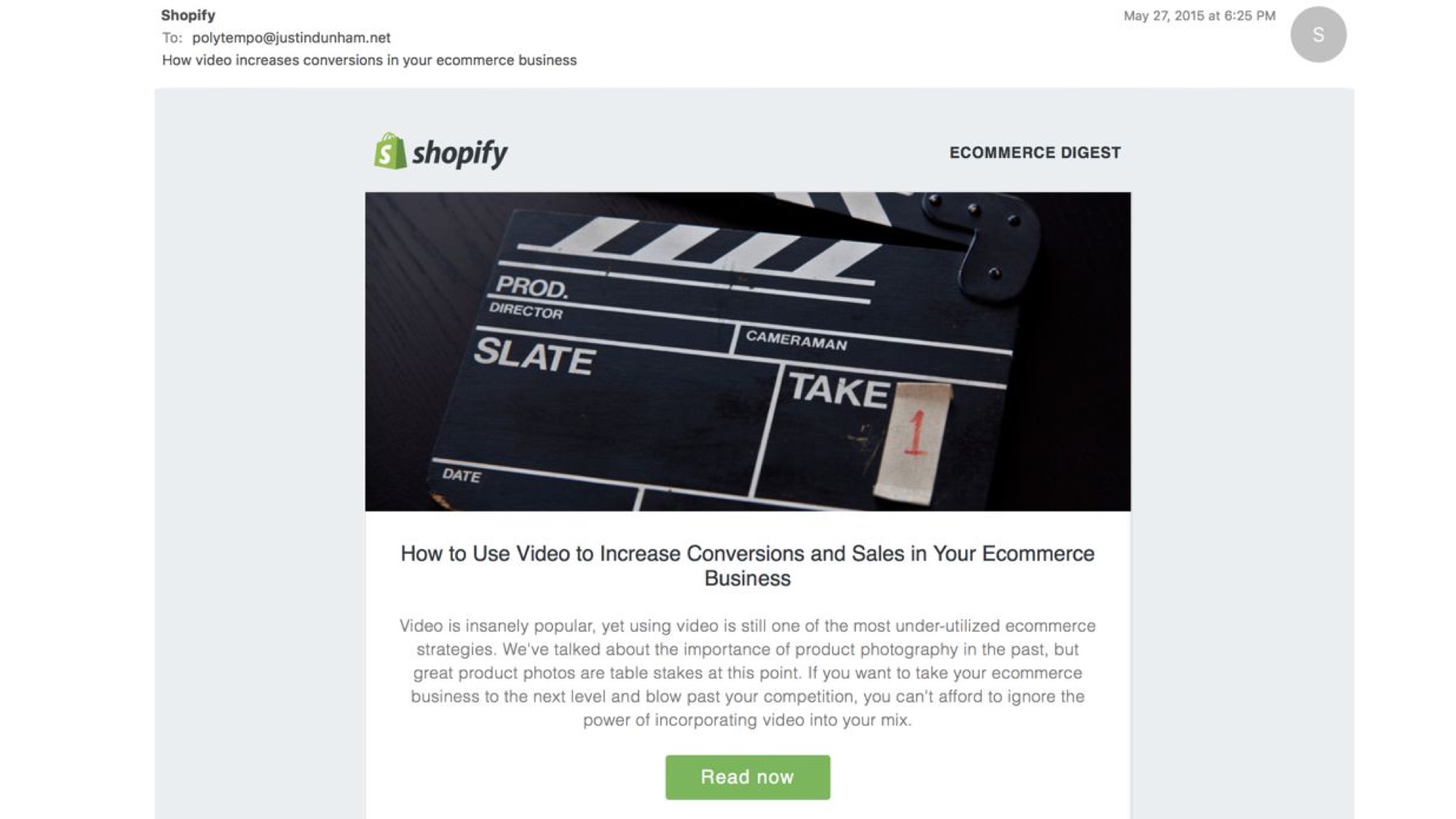 |
As part of your nurture tracks, send something of value! Here’s Shopify, using the fact that I’ve signed up for their service -- I haven’t just downloaded something or signed up for a newsletter, or whatever. They’re giving me advice that they know will be relevant to me based on the information they have. |
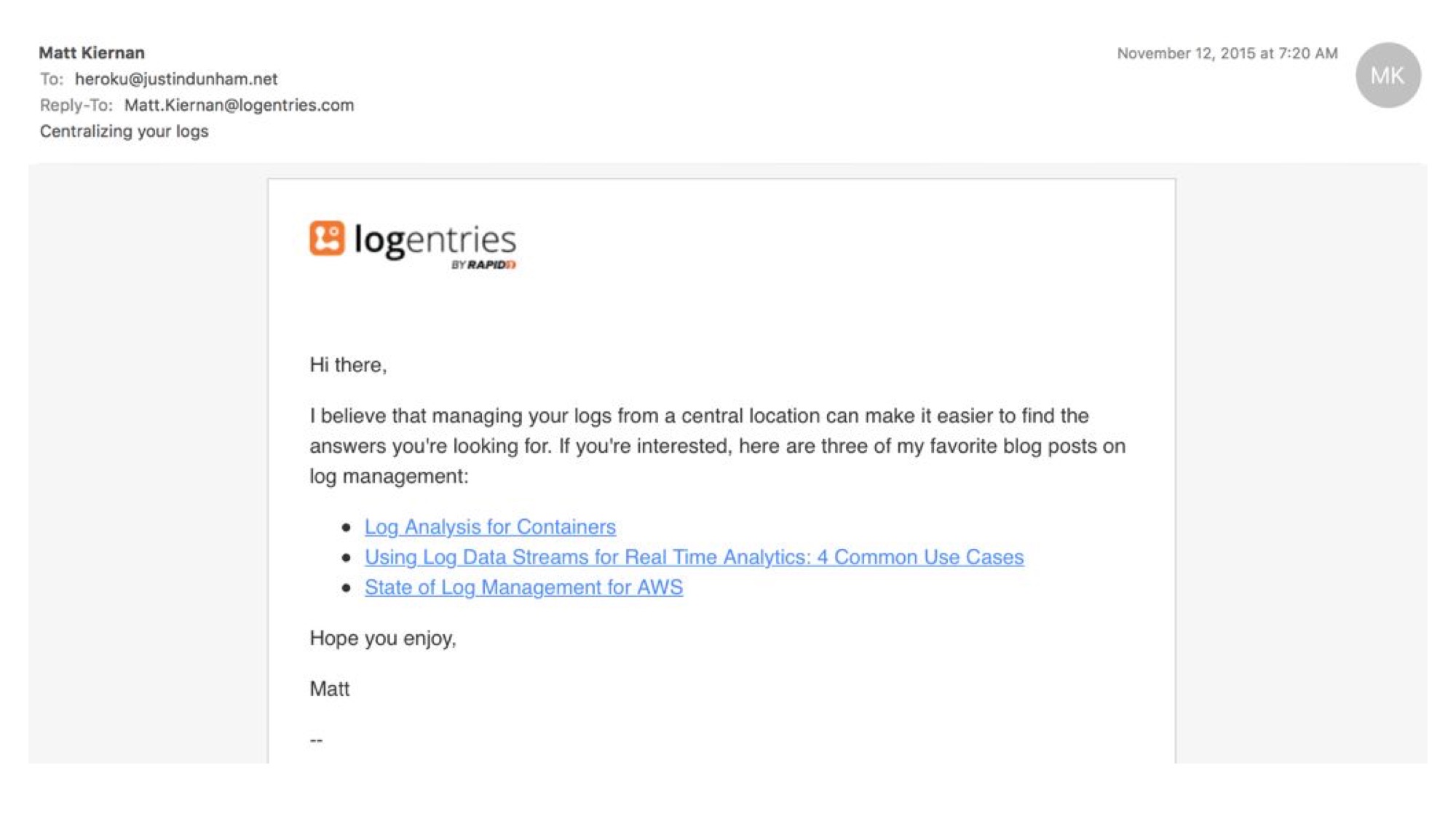 |
Here’s a logging service that I signed up for more information on, for an app I built. At least one of these actually goes to someone else’s blog. But it’s a really simple email that has useful information, and is about helping me go through the buying process, rather than trying to pitch me. |
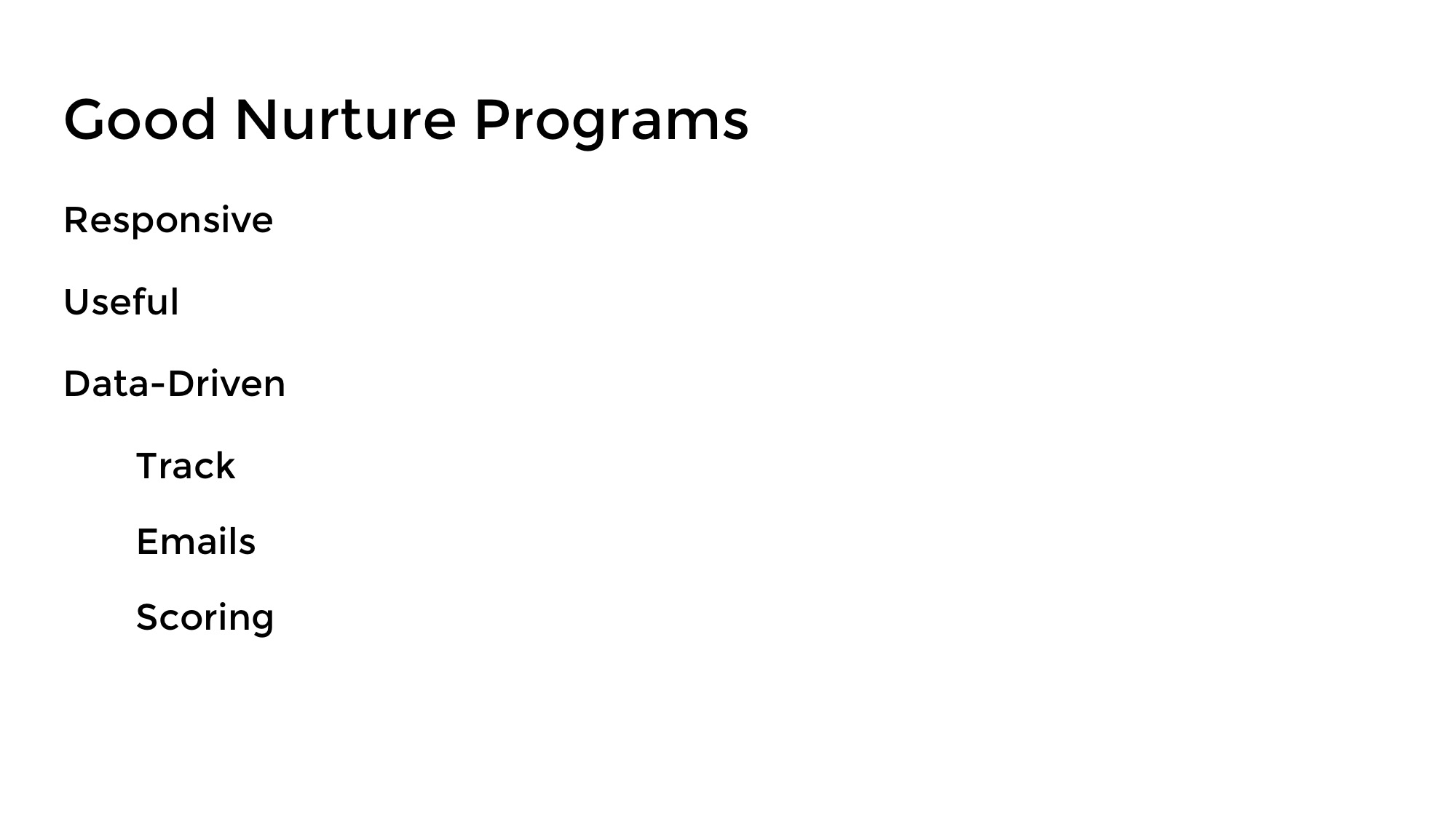 |
And then the last thing I want to talk about is using data in your nurture programs. Because even a simple nurture program has a bunch of moving pieces to it, there’s a lot that you need to think about and track in order to make them effective. |
 |
We said this is what's actually happening. |
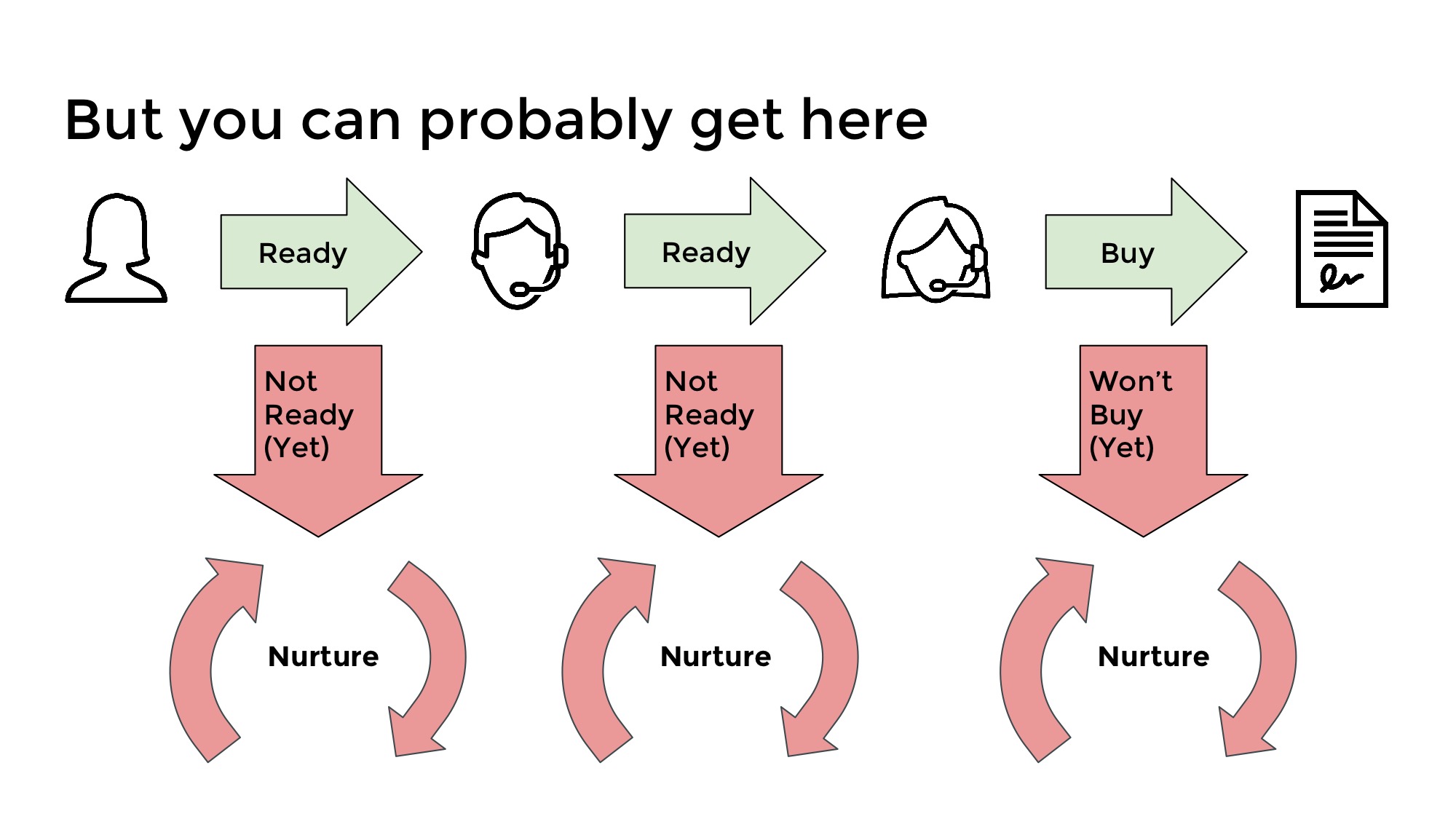 |
But we can get to this. |
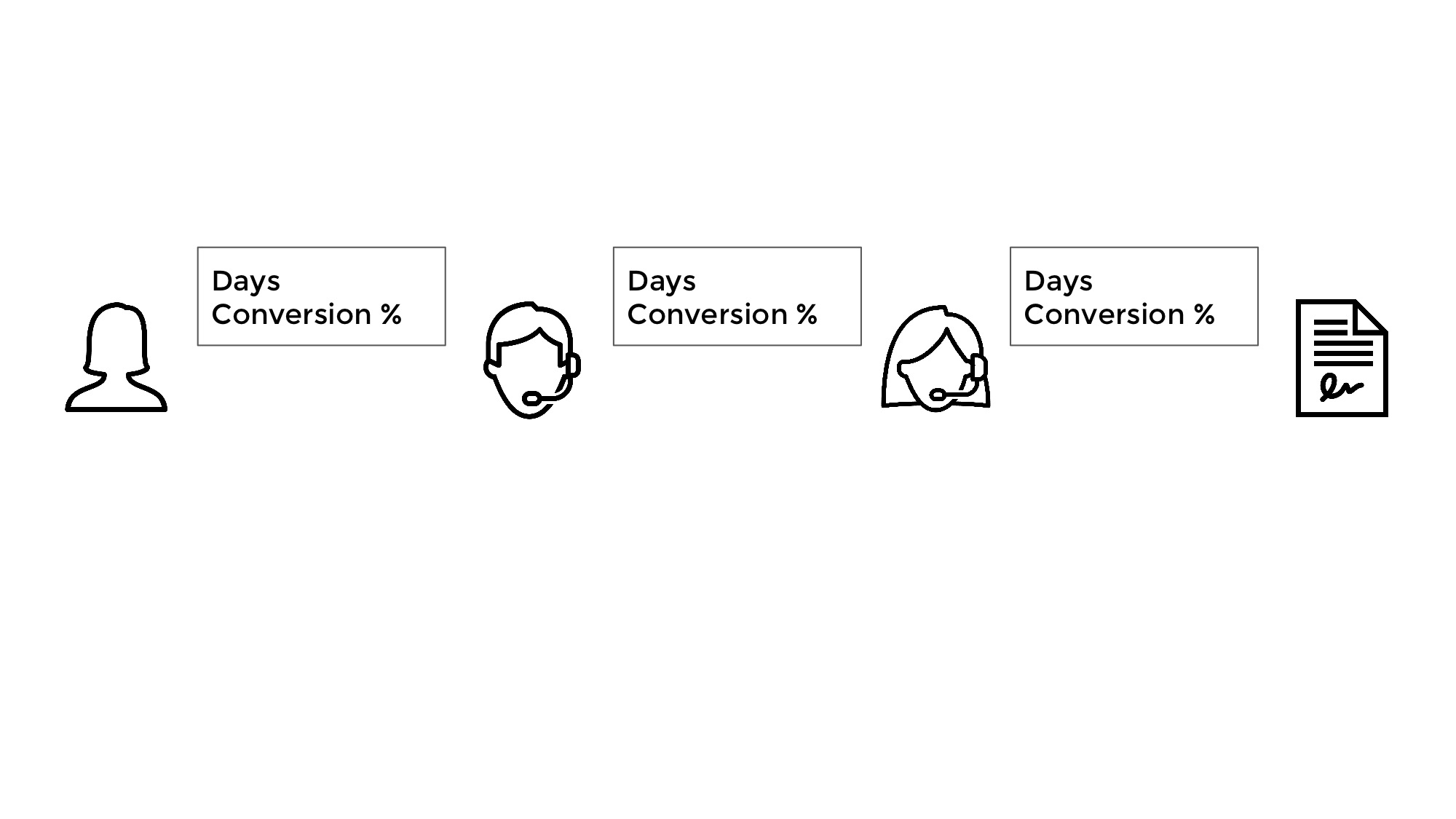 |
So for each funnel stage, you’re going to want to measure, before and during nurture, how many days it takes prospects to move forward, and what percentage of them do. There are other measures you can use, but I think these two are the most important. |
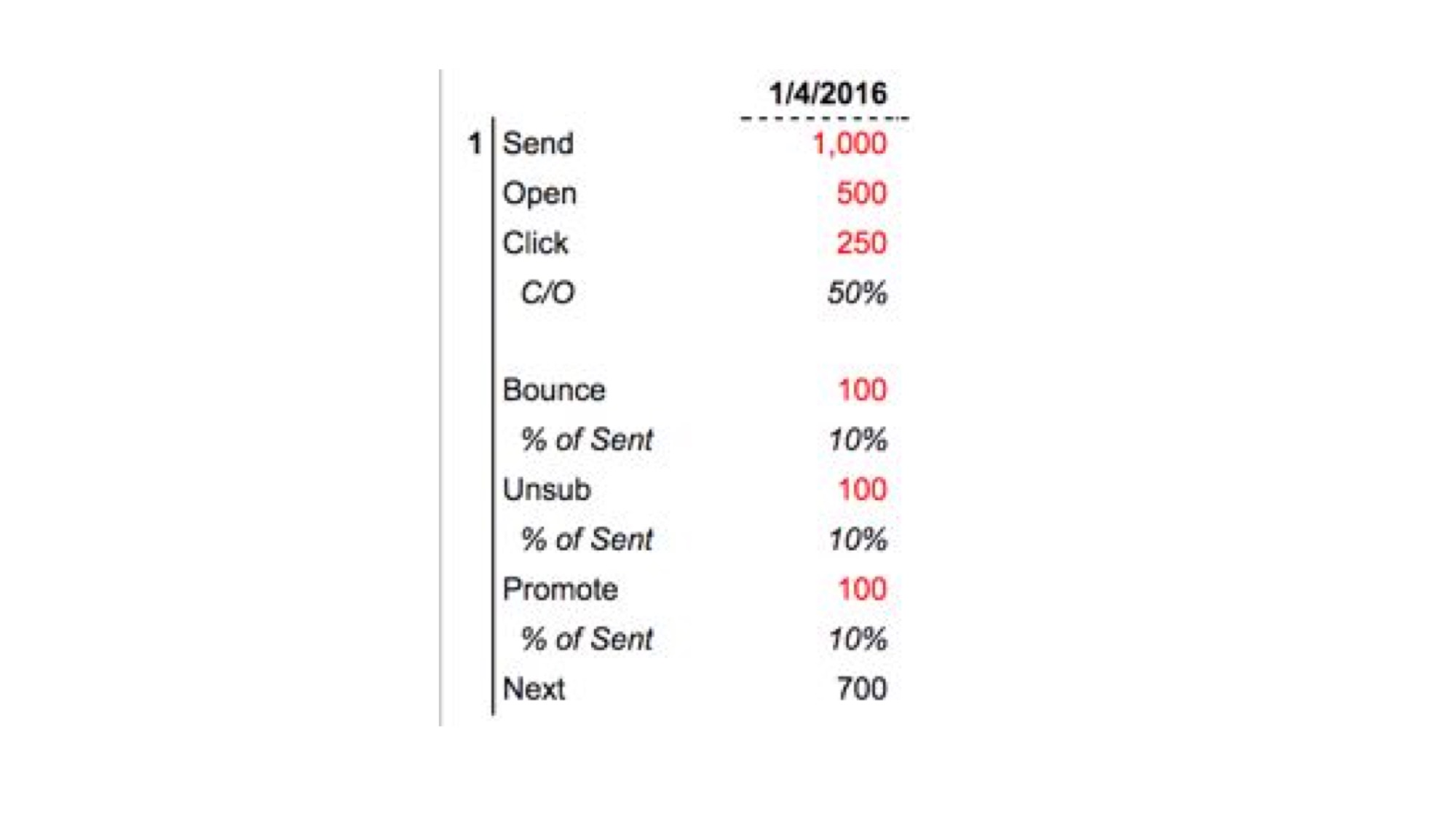 |
You also need to measure the performance of every single email you send in a nurture track, if you want to be able to improve it. Here’s a tracker that I currently use, with some fake data. This is for one email. We look at sends, opens, clicks, and click to open. But we also look at -- how many leads are unsubscribing? How many leads are taking action on the nurture so that they’re showing they’re sales ready, and they’re actually being kicked out because we think it’s worthwhile for sales to talk with them? And then at the very bottom of this list, we’re looking at how many people burn out. Go through the entire nurture track without doing anything. We want to get this number as low as possible. There are a lot of things you can do with this data, but one critical thing is A/B testing. |
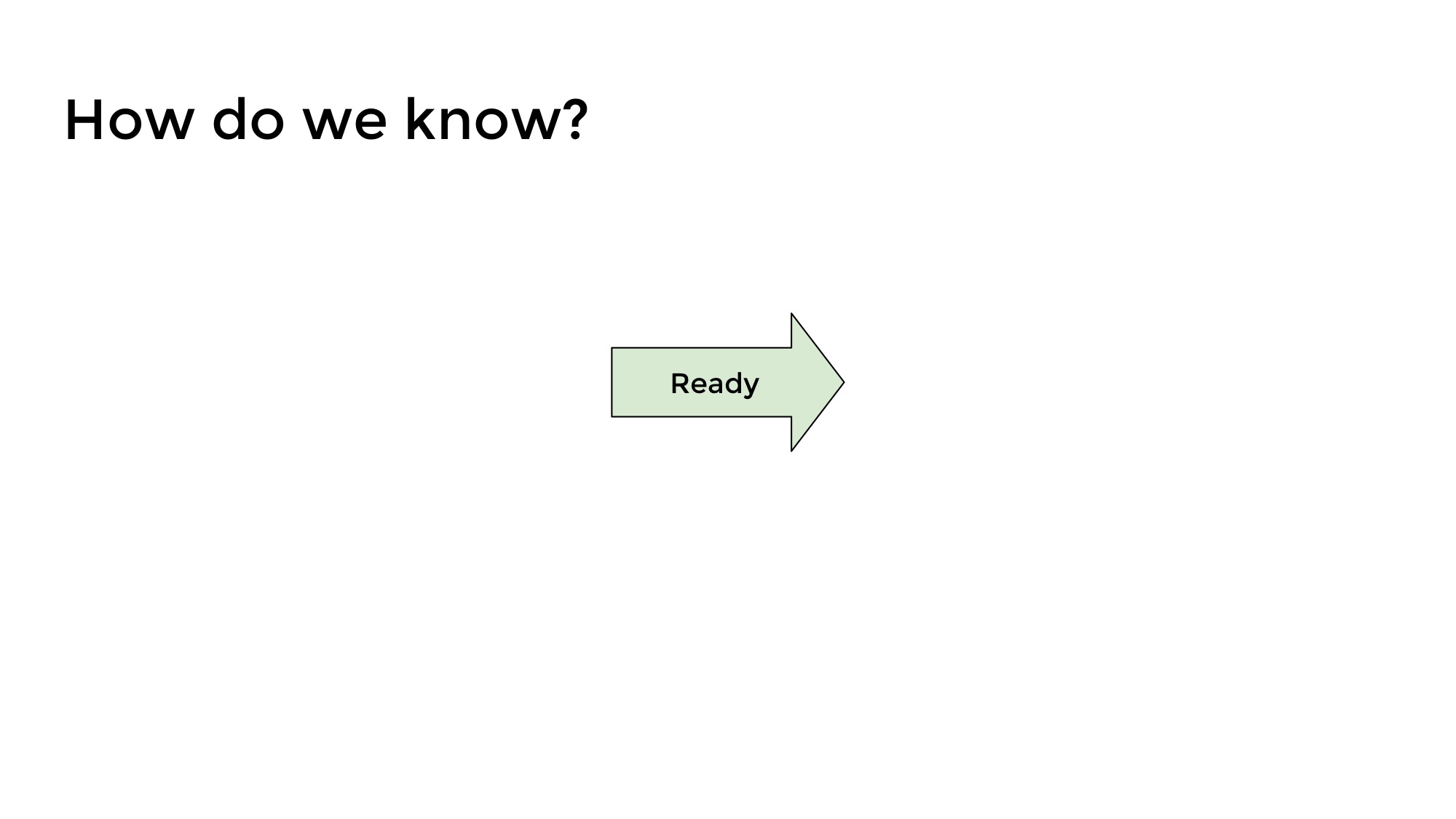 |
Now, I casually mentioned in the previous slide that people get promoted from a nurture track. That we’re trying to create sales-ready leads. But this is an automated system. So we need an automated way to decide whether someone’s actually ready to talk to a rep. |
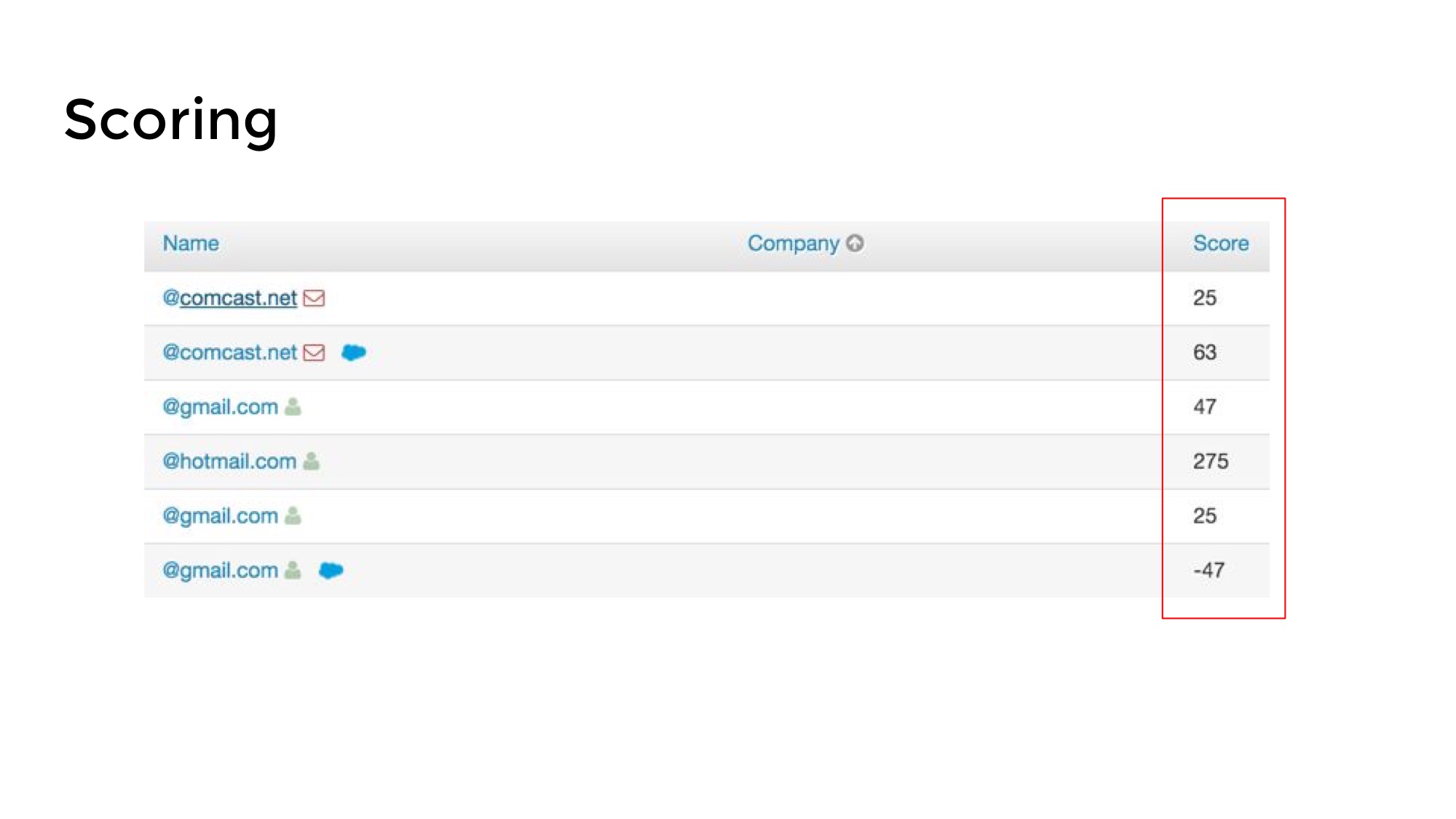 |
Probably most people in this room have heard of lead scoring, and that what it’s for. Here’s an example from a Pardot instance. |
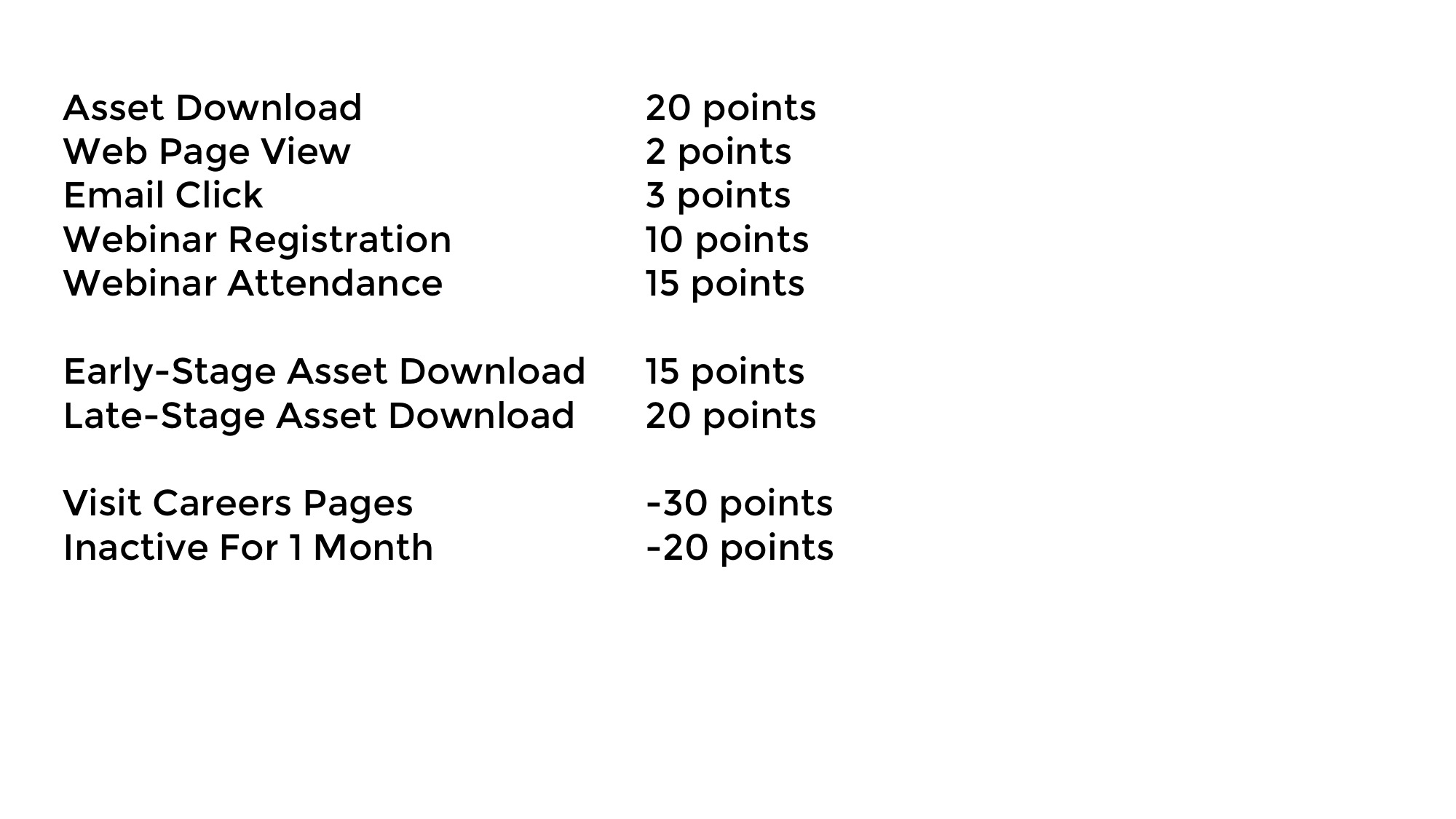 |
Scoring basically means, for various actions, we’re going to give a lead a number of points. When they pass a certain threshold, they’re ready to talk to someone. You can be really creative in setting this up. |
 |
Here’s an example from Marketo. Couple of interesting features to note here: Decay Inactivity, and Content scoring. They also make a distinction for Intent vs. Engagement. |
 |
Working closely with Sales to define what actions get what points, and what the threshold is, is really important. |
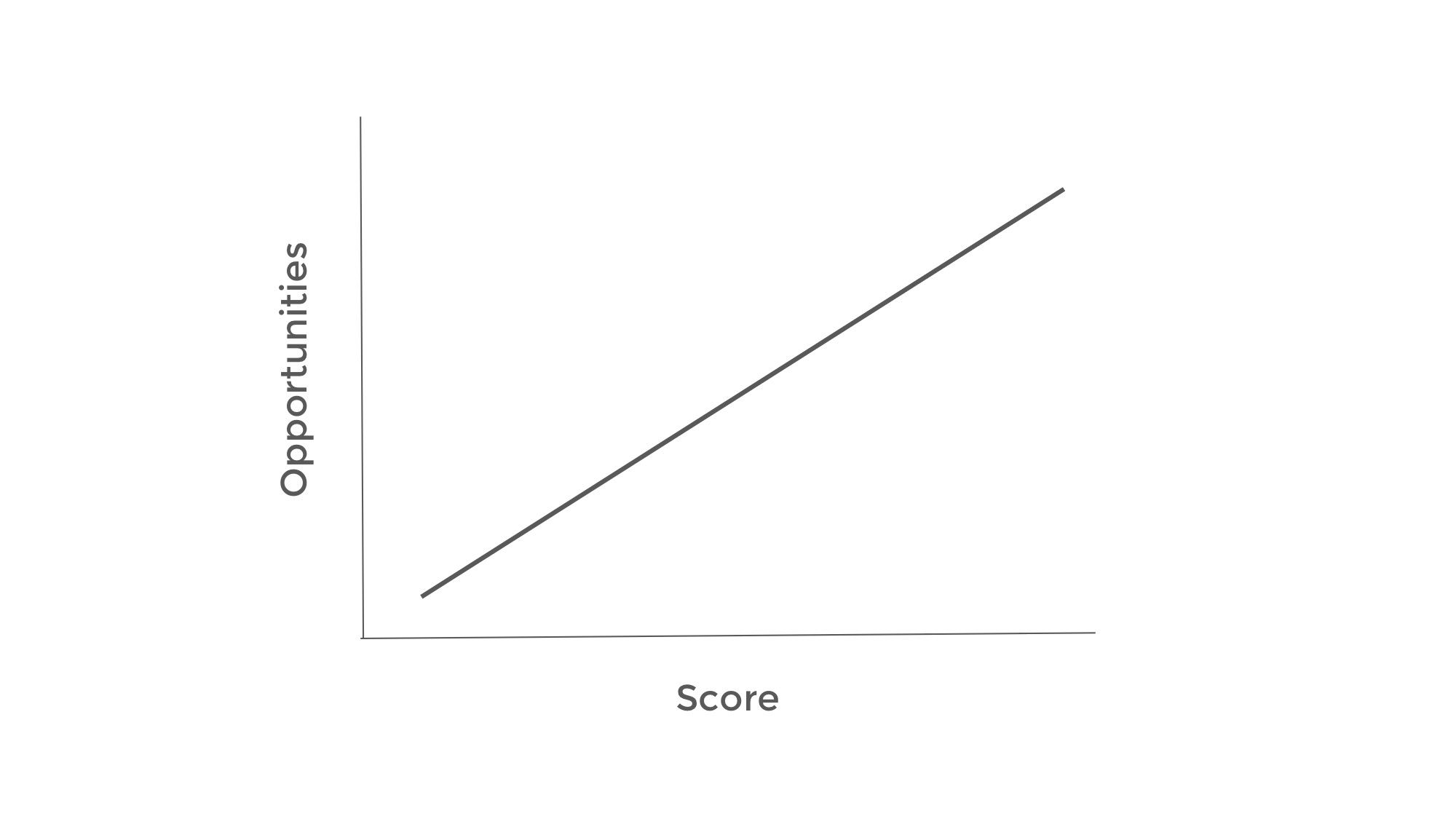 |
What you want is for it to look like this. The score is predictive of the number of opportunities. |
 |
In my experience, it’s hard to do. I worked at a company where the chart looked like this. Score was actually inversely predictive. Nobody had looked at a graph like this, and instead they just added random rules. |
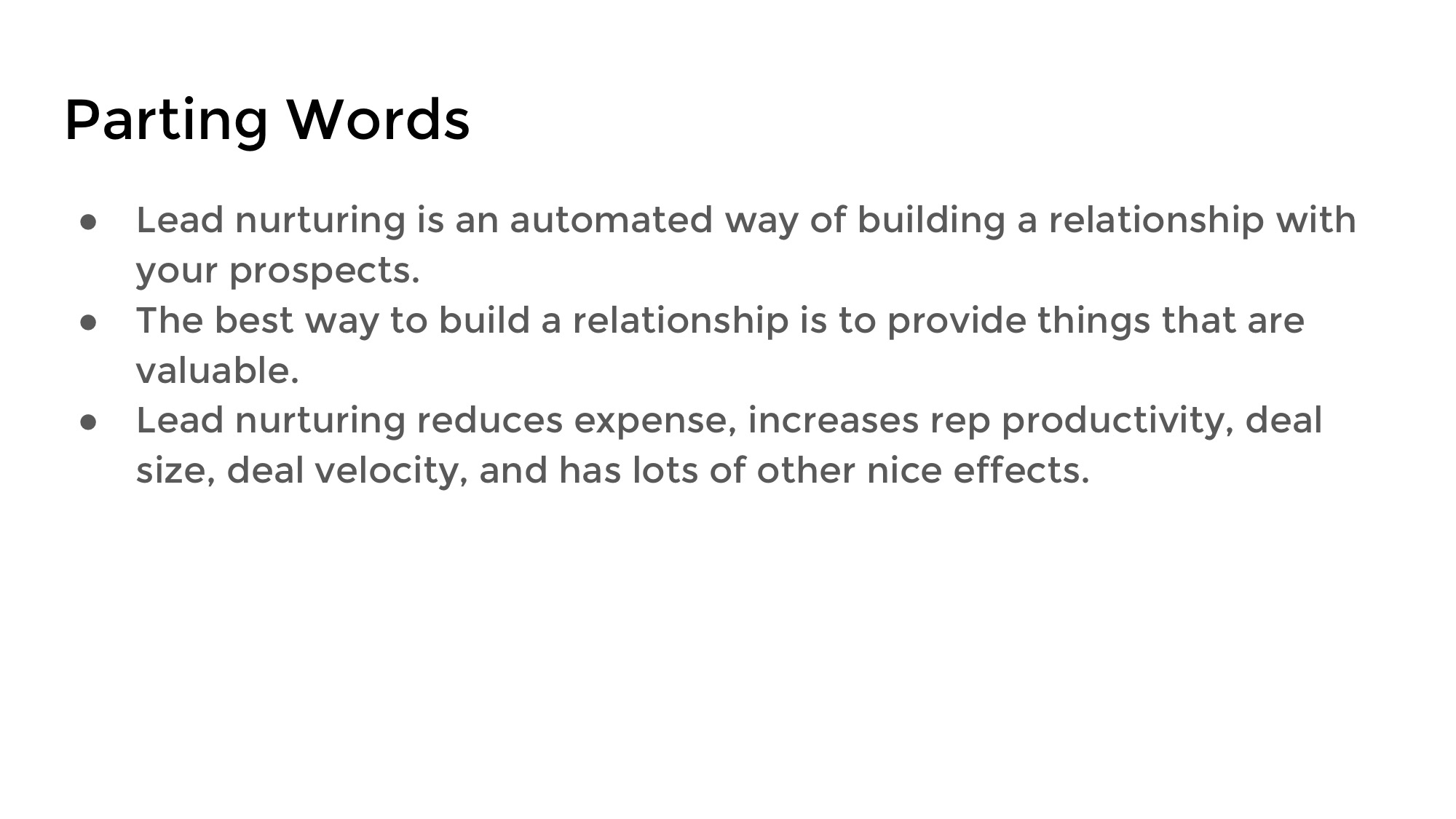 |
So that’s pretty much it. |
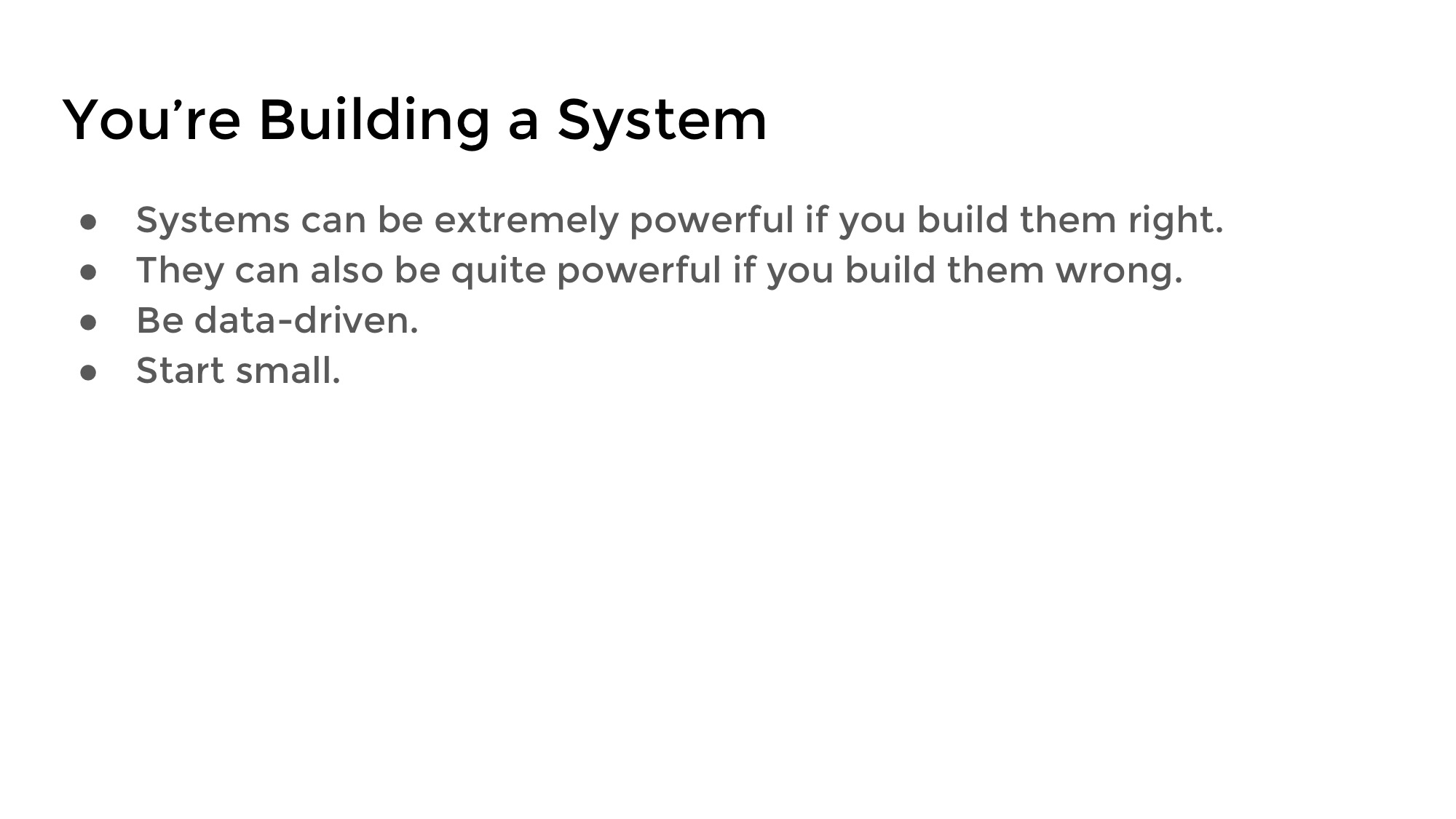 |
And please remember that you're building a system. You need to start small and then scale. Building the system right can be really powerful. |
 |
Thanks! |